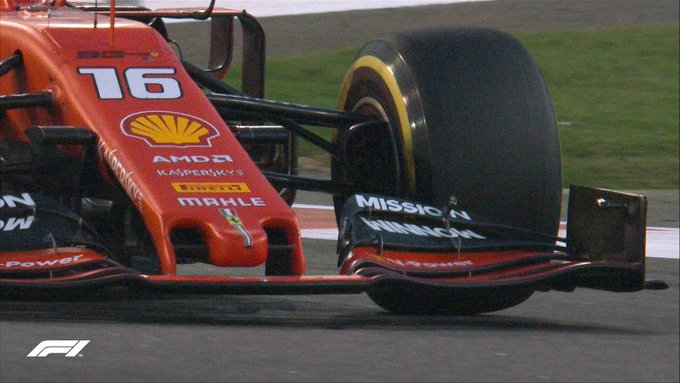F1 tires are built to be durable. The incredibly high downforce of the cars puts the tires under massive amounts of pressure. This means they last a lot less time than any road car tires do. This is not because of the poor quality of the tires. It is simply because F1 tires are put through so much more wear than any road tire.
This means it can be pretty amazing how long the tires last, as it would be an awful comparison to make. Tire length can vary massively, and the amount of laps that F1 tires last is based on many different factors.
When you look at the 2021 season’s Pirelli tires, the hardest tire of the set, the C1, can last 30-50 laps, and the C5 tire can last around 10-20 laps, depending on the track. Many factors affect how long these tires last, like the track and its conditions, temperature, humidity, and tire management.
A big reason for how long these tires last is because of how they are designed. Formula 1 designs these tires to produce incredibly high levels of grip for a short amount of time. The slight difference in the tires is precisely what F1 teams want.
If you’re looking for some F1 merchandise, check out the awesome stuff at the official F1 store here.
Different tracks affect how long different F1 tires last. The main reason for this is that different tracks have differing levels of downforce, which can cause tires to degrade faster than on low downforce tracks.
Tracks with high downforce like Hungary cause tires to wear a lot quicker than tracks with low downforce like the Red Bull ring. Tracks like Hungary, Imola, Singapore, Spain, and Monaco are all high downforce circuits.
You will also often see drivers waiting for other drivers to go out first, whether in practice or qualifying. There will be lots of particles on the track when a track is new, and there will not be a racing line developed. As a Formula One weekend develops, the track begins to wear in a lot more.
There will be lots of particles on the track when a track is new, and there will not be a racing line developed. As a Formula One weekend develops, the track begins to wear in a lot more.
This means that drivers wear down the racing line, making it smooth and easy to drive on compared to the rest of the track. This also means that tires will last longer in races than they do in practice. The smoother, worn racing line will produce less wear on the tires, making them last longer. F1 tracks can also wear down different tires altogether.
Tracks built on heavy braking and long straights like Baku are much more likely to wear down the rear tires due to lots of heavy braking force. In contrast, tracks like Hungary have lots of high-speed corners and will wear down the front tires a lot instead. The track plays a huge role in how long F1 tires last.
F1 dry tires are built to be put under massive amounts of force and pressure. They wear quickly, and the temperature and humidity can affect exactly how long they wear. Track temperature is a crucial element of tire wear and is closely monitored by teams.
They wear quickly, and the temperature and humidity can affect exactly how long they wear. Track temperature is a crucial element of tire wear and is closely monitored by teams.
The asphalt that makes up the Grand Prix circuit is black, meaning it absorbs a lot of heat from the sun, making the track temperature almost always hotter than the air temperature, even up to 10 degrees Celsius higher than the air temperature.
Tires wear quicker in hotter conditions, as they become softer in the heat, and it causes more friction with the track. This causes them to wear a lot faster. It is one of the reasons that teams have looked for races in Abu Dhabi and Bahrain to be raced well outside of those countries’ summer months, as it can make it a lot more difficult on the tires.
This is in very extreme conditions. However, F1 tires are built to perform at high temperatures, as the enormous amount of friction they go through during a race makes them incredibly hot. F1 tires are built to start performing well when they reach around 100 degrees Celsius to handle some heat.
But when high track temperature is added to the already incredibly high temperatures reached from friction, it causes tires to wear down incredibly quickly, much quicker than if the circuit was a lot colder. Of course, rain has considerable effects on how long tires last, but wet tires wear very differently from dry tires, explained later in the article.
Tire management is a crucial part of an F1 race. Finding the balance between maximizing your lap times and making the tires last as long as possible is difficult to find. It is difficult simply because the tire wear increases as you push the car faster and faster to get your higher lap times.
So that balance becomes incredibly important during a race. One of the main reasons you will see race engineers on the radio telling a driver to slow down or warning a driver about the tires becoming too worn.
It means that drivers have to manage their tires to get the most out of them. It is especially difficult when the tires are not designed to last a long time. The tires are specifically designed for short bursts of high grip, and they tend to drop off quite quickly after that.
It is especially difficult when the tires are not designed to last a long time. The tires are specifically designed for short bursts of high grip, and they tend to drop off quite quickly after that.
The success of Sergio Perez has shown this. The Mexican is one of the best at getting high performance out of aging tires, and it is one of the reasons for his recent promotion and contract extension with Red Bull.
If a driver can preserve their tires for longer, they can get more grip out of the tires while others begin to struggle. Drivers can change things about their driving styles during a race to preserve tires. The main parts of racing that wear down tires are high-speed corners and heavy braking.
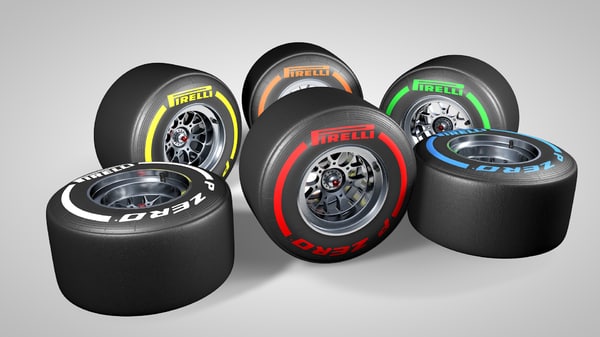
These methods have helped every F1 driver over the years. However, these management tactics can hurt your race. Both of these processes slow a driver down, not maximizing your car’s lap time if you’re not driving the car to the max. It means your lap times will increase, and it can hurt a driver’s performance.
Finding out how much tires will wear and how that affects lap times is a crucial job of the pit wall of each team. It creates huge chances for teams to take advantage of strategy when they don’t have the pace.
Currently, Formula One uses 5 different tires compounds. These range from C1-C5. The C1-C5 differ based on their grip and durability; the C1 tire is the most durable but with the least grip, and the C5 has the most grip but the least durable.
The C1-C5 differ based on their grip and durability; the C1 tire is the most durable but with the least grip, and the C5 has the most grip but the least durable.
The tires used between each race change dependant usually on the downforce level on the track, as some tracks put the tires through a lot more than others.
It means that the C5 is the softest of all, so it also wears the quickest. The C1 I is the hardest of all the tires and will therefore last the longest. It is just the way the tires are designed. Pirelli state that the C1 tire is designed “for circuits that put the highest energy loadings through the tires.”
They describe the C5 tire as having “a considerably shorter lifespan than the other tires in the range.” It just means teams have to be careful with which tires they choose. This is the case simply because this is how Pirelli designs the tires. Teams have to be careful about tires graining as well.
Teams have to be careful about tires graining as well.
Graining is when rubber strips break off from the tire and then immediately stick back onto the tire. This creates an uneven surface on the tire, making braking and cornering much more difficult. It is much more common with soft tires and can be a random event that has considerable effects on the levels of grip the tires are given.
Pirelli also produces two tires designed for wet tracks. The first is the intermediate tire, which is the much more versatile of the two rain tires. They are designed to be used on a wet track that does not have any standing water.
Intermediate tires are built to be very durable because they have to produce grip in much more difficult conditions than dry tires. F1 cars don’t have stability control, traction control, or antilock brakes, so the tires must grip in wet conditions.
These tires, therefore, can a lot of the time last up to 50% of a race distance, so any race ran completely in conditions for intermediate tires would likely end up a one-stop race. The intermediate tires also don’t wear down as much because they’re hard tires.
The intermediate tires also don’t wear down as much because they’re hard tires.
They are much harder than any of the C1-C5 range so that they can handle wet conditions. This strength means they do not wear as quickly as softer tires would.
Full wet tires are another step up from this. They’re designed for heavy rain conditions, with standing water on the track. This means they are even harder and more durable than the intermediate tires. They are designed to withstand increased resistance to give the tires a lot more grip in wet conditions.
Often, these tires will also be able to last for almost an entire race, although they will not be enough to be used for a whole race. However, wet tires also do something that dry tires do not. They can wear incredibly quickly if they’re not used in the right conditions.
Quite often, you will see drivers on intermediate tires struggling in drying conditions. This is because as the track dries, the friction with the tires increases.
Wet tires are designed with incredibly high grip but too much grip for dry conditions. This means intermediate tires will overheat very quickly on a drying track and begin to wear very quickly.
It is difficult to put an exact length on how long F1 tires last. There are so many different factors that affect how long tires last, and the type is essential. The more important rule is that the hard tire will last the longest in any given race weekend, with the soft tire lasting the fewest laps.
This is simply due to how the tires are designed. These different tires will produce strategy decisions and make the pit wall incredibly important in these races.
Formula 1 tires take a lot of strain over the course of a race.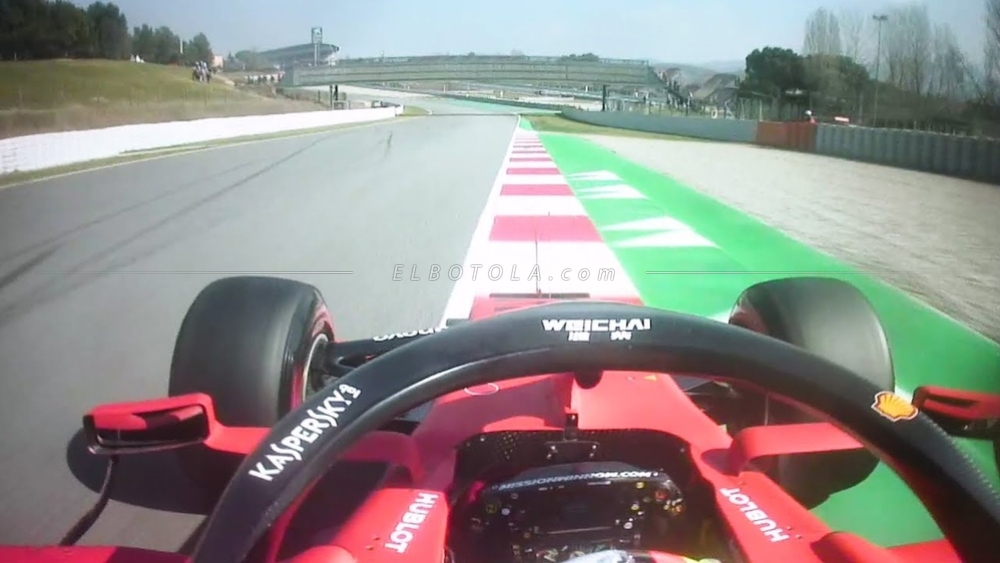 They need to withstand a massive force as Formula 1 cars can sometimes corner at speeds of up to 190 miles per hour. The tires need to be strong enough to endure multiple laps, but just how long F1 tires last can vary widely.
They need to withstand a massive force as Formula 1 cars can sometimes corner at speeds of up to 190 miles per hour. The tires need to be strong enough to endure multiple laps, but just how long F1 tires last can vary widely.
F1 tires can last anywhere from a few laps up to 50+ laps. Formula 1 tires are designed for performance rather than longevity. This means that the most durable tires won’t last more than 40 laps (about 120 miles) in most cases, depending on the track conditions and the compound of tires being used.
There are a lot of different factors that influence how long Formula 1 tires can last. It’s important to consider these to truly understand how Formula 1 tires work and why they don’t last more than 190 miles (a full race distance).
Table of Contents
How Many Laps Do F1 Tires Last?In order to understand how many laps F1 tires can last, it’s important to understand a few different elements first. There are various factors that influence the longevity and durability of the tires.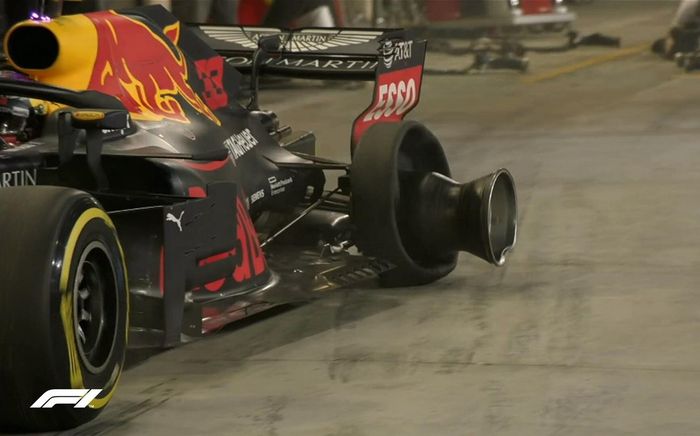
The first is that each racetrack is different. They are not only different in length, but they are also different in a few other ways too. Some tracks have a more abrasive surface, faster corners, or higher average track temperatures. Others might have banked corners or plenty of long straights.
All Formula 1 circuits are of different lengths. Therefore, the number of laps that a tire can last isn’t a great way to measure tire lifespan. The average F1 circuit is around 3.5 miles in length. However, the shortest (Monaco) is just over 2 miles long, while the longest (Spa in Belgium) is more than 4.3 miles in length, double that of Monaco.
You also need to keep in mind that each track has a different ‘set up’ of tires. While three different compounds will be taken to each racetrack, they can still differ between each circuit. The standardized compounds are soft, medium and hard.
However, in the bigger picture, these are only three out of five options.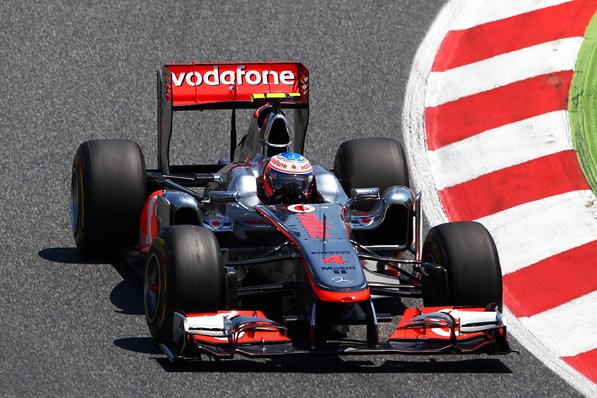 The entire range of Formula 1 tires are C1, C2, C3, C4, and C5. The C1 tire is the hardest compound that is available, whereas the C5 tire is the softest compound that is available.
The entire range of Formula 1 tires are C1, C2, C3, C4, and C5. The C1 tire is the hardest compound that is available, whereas the C5 tire is the softest compound that is available.
Pirelli, the tire manufacturers, are the decision makers when it comes to which compounds to bring to each track depending on the track’s characteristics. However, the tire compounds will still be called soft, medium and hard and will still have the red, yellow and white branding.
To make this easier to understand, let’s look at an example. Let’s say Formula 1 is racing in Spain, a circuit that is generally tough on tires because of the high temperatures and high-speed nature of the circuit. Pirelli might select the C2, C3, and C4 tires for this race. The C4 tire will become the soft tire, C3 the medium tire and C2 the hard tire.
The next race on the calendar is Monaco, a tight and twisty track where cars need a lot of mechanical grip. The low-speed corners and generally lower top speed means that there is much less strain on the tires, but lower downforce effects, so the drivers need more grip from the tires.
Pirelli might then bring the C3, C4, and C5 tires to the Monaco Grand Prix. The C5 (not available in Spain) will become the soft tire, C4 (softest available in Spain) will be the medium tire and the C3 (medium tires in Spain) will become the hard tire.
You might be wondering what soft, medium and hard compounds are and what the difference is between them. It refers to the ‘compound’ of rubber that is used to make the tire. Softer tires tend to have more grip, which allows drivers to go faster. However, the softer tires heat up quicker, wear faster, and so won’t last as long as the other, harder tires.
The hard tires offer the least amount of grip for drivers, but they will also last the longest. The medium tires are a middle ground between the two extremes. Medium and hard tires are mostly used during the race whereas soft tires are used in qualifying to set the fastest possible lap time.
Soft tires can usually only last around 10 to 15 laps in the majority of cases. Some drivers can make them last longer than others, but this requires excellent tire management. Soft tires can begin to overheat quickly which will cause them to wear out even faster than they usually do.
The medium tires are a blend of the soft and hard tires in terms of how long they can last. Some drivers can extract a lot of pace out of these tires while making them last just as long as the hard tires.
The hard tires can usually last between 25 and 60 laps during a Formula 1 race. However, this is dependent on the driver and the track conditions. There have been scenarios where some drivers could have made the hard tires last the full race distance, but have been forced to stop due to the rules stating that at least two compounds must be used during dry conditions.
Just how long F1 tires last is clearly dependent on lots of factors. Another one to consider is the car itself. Drivers might use a high downforce setup, which puts yet more strain on the tires, and can wear them out faster. Following closely behind another car also wears the tires out faster as the driver behind has to work harder to keep the car under control in the dirty air.
Another one to consider is the car itself. Drivers might use a high downforce setup, which puts yet more strain on the tires, and can wear them out faster. Following closely behind another car also wears the tires out faster as the driver behind has to work harder to keep the car under control in the dirty air.
Wet tires can last much longer than dry tires on Formula 1 cars, even up to a full race (no mandatory pit stop). As they’re used in wet conditions, they can stay cool, reducing the overall rate of wear on the tires. However, wet tires can wear out within a lap or two if the track dries up quickly.
If the track is drying, the wet and intermediate tires will begin to struggle as they overheat quickly. These tires can wear out extremely quickly if they are not kept cool. You will often see drivers purposefully hunting for and moving into puddles on a drying track in order to keep their tires cool.
Wet and intermediate tires are different to dry tires in Formula 1. The most obvious difference is that the wet and intermediate tires have treads on them whereas the dry tires are ‘slicks’ meaning they have a smooth surface.
The treads that are found on wet and intermediate tires are used to disperse the water from underneath the tire. With slick tires, there is nowhere for the water to go, and therefore the wheels are lifted up off the ground and will no longer be making contact with the tarmac. This is known as aquaplaning, and the car will become impossible to control.
However, with the grooved tires, the water can easily pass underneath and to the sides of the tires, allowing the rubber to stay in contact with the asphalt. This is why the wet and intermediate tires are able to provide more grip than slick tires on a wet track. Wet tires can displace 85 liters of water per second when a formula 1 car is travelling at 190 miles per hour.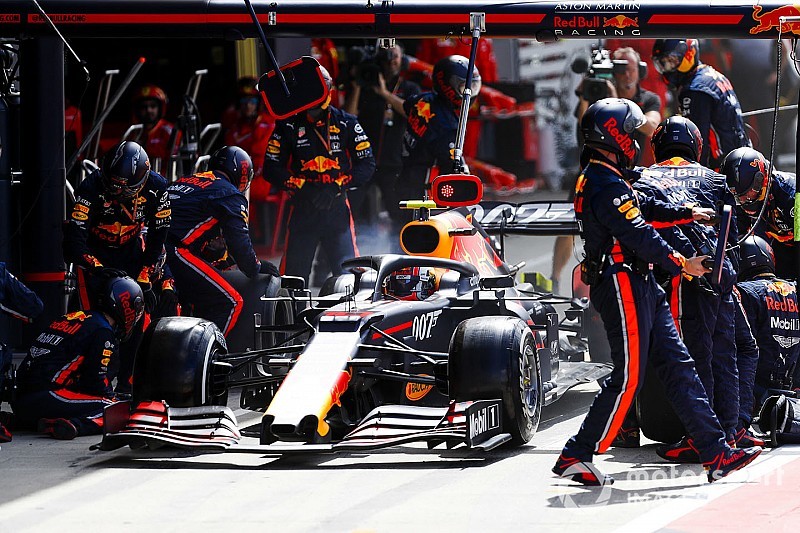
However, this is not the only difference between wet and dry tires in Formula 1. The treads in the tires create what are known as ‘blocks.’ This refers to the sections of the tire that are touching the asphalt. The blocks on wet tires can heat the tires up significantly more than with slick tires.
This is useful for Formula 1 cars because warmer tires provide more grip. However, it is only helpful as long as there is water on track to keep the tires within their ideal operating window. As soon as the track begins to dry these blocks will cause the tires to overheat quickly. Tires that are overheating will provide the driver with no grip and they will also shred the tire much quicker.
However, if a driver can manage their wet tires, they can make them last the full race. This is because, in wet conditions, there is no mandatory pit stop. However, they’ll usually suffer in terms of performance, as they will constantly be fighting for grip and trying to stop the tires overheating.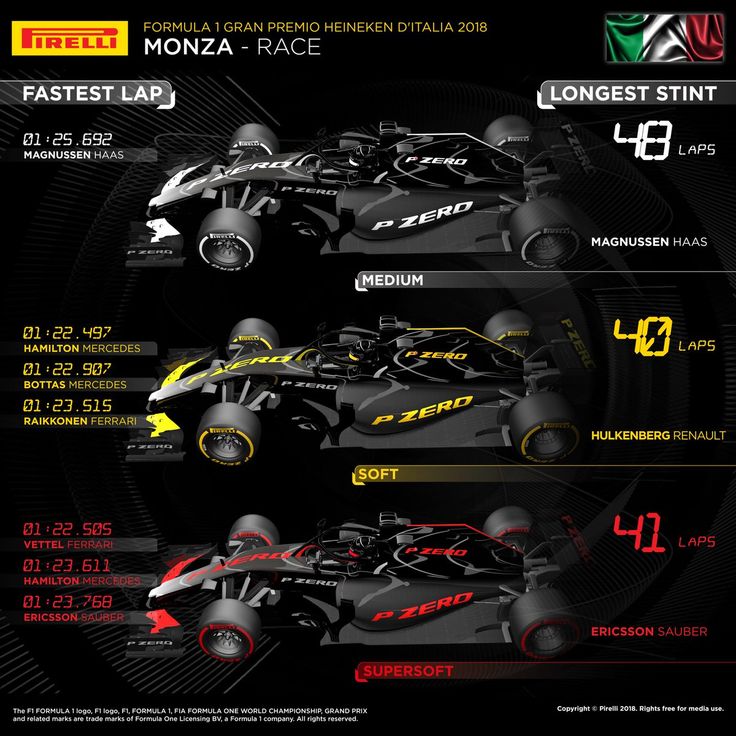
Esteban Ocon completed the Turkish GP in 2021 on a single set of intermediate tires, on a track that didn’t see much rain but remained wet enough for slicks to not be a viable option. However, given that nobody had done that since 1997, when Mika Salo went the full distance at a wet Monaco GP, it’s clearly not a common occurrence in modern F1.
How Does The Track Affect How Long F1 Tires Last?The surface of the track affects how long F1 tires last, as more abrasive surfaces cause tires to wear out faster. Tracks with heavy braking zones and lots of high speed corners also usually have increased tire wear, while a focus on slow speed corners and long straights usually means less wear.
The type of track has a big impact on the amount of wear an F1 tire can take. Some racetracks are especially hard on tires, in which case Pirelli would bring the harder compounds that would last longer.
One of the most important factors that influences tire wear is how abrasive the surface of the track is. This is dependent on the type of tarmac that is used on the circuit as well as how long it has been since the track has been resurfaced.
This is dependent on the type of tarmac that is used on the circuit as well as how long it has been since the track has been resurfaced.
Tracks that have a more abrasive surface (rougher surface) will be harsher on the tires. These tracks tend to cause tires to wear out much quicker than they usually would. Abrasiveness can be caused by the type of asphalt that is used, or overuse of the track (if the track has not been resurfaced recently).
Tracks that have recently been resurfaced might have smooth tarmac, but the new asphalt releases oils that can make the track extremely slippery. This means that the cars need more grip and would need softer tires. However, if the tires are sliding too much they will begin to overheat and wear out faster.
Circuits with faster corners can also cause the tires to wear out faster. Circuits with a series of long fast corners will cause the tires to work harder and begin to overheat which will wear them out much faster than usual.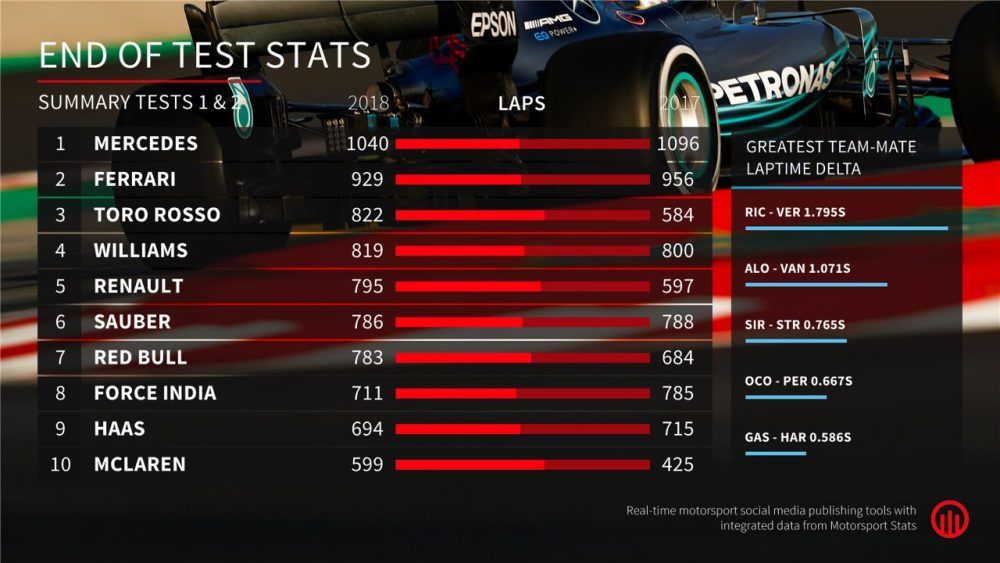 Usually, tracks have faster sections followed by slower sections or long straights which does tend to help keep the tire temperatures in an ideal operating window.
Usually, tracks have faster sections followed by slower sections or long straights which does tend to help keep the tire temperatures in an ideal operating window.
Slow corners are not necessarily safe for tires either, though. Whenever there are heavy braking zones there is the risk of a driver locking their brakes. If a driver locks up, they could flat spot their tires, which can render them practically useless. A flat spot on a round tire has a hugely detrimental impact on performance.
So, the track layout and the track surface clearly have an impact on how long F1 tires last, but what about the weather?
How Do Weather Conditions Affect How Long F1 Tires Last?Weather conditions affect how long F1 tires last in terms of temperature, wind speeds, and whether or not the track is wet. Hotter track surfaces lead to hotter tires, and while hot track surfaces offer more grip, they also bring higher chances of tires overheating.
If the weather conditions are hotter, the track temperature tends to be much higher. A high track temperature means that the tires will naturally be warmer which causes them to overheat and wear out much quicker. While drivers have more grip initially, this increased chance of overheating can make managing tires at hot tracks very tough.
Colder temperatures might make the tires last longer, but it could also mean that drivers will struggle for grip. In order to produce grip, the tires on a Formula 1 car need to be warm enough, but not too hot.
If a circuit is exceptionally windy, cars might have to fight the wind more through the corners, and fighting against the wind can put extra strain on the tires, wearing them out faster. Finally, if the track is wet, this clearly has implications on how long F1 tires can last, as it usually means drivers need to switch to the intermediates or the wets.
How Can F1 Drivers Manage Their Tires?One of the most respected attributes of some of the best Formula 1 drivers is how they manage their tires.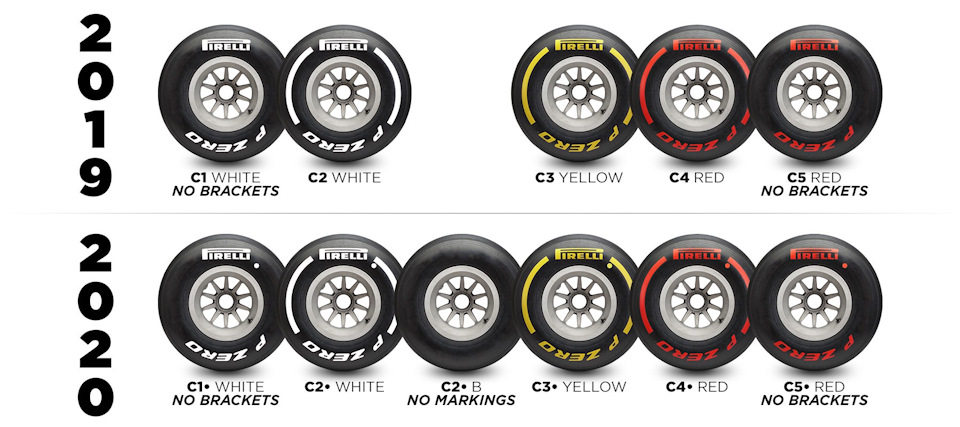 Some drivers are able to make their tires last longer while going at the same speed as other drivers. Managing tires is all about maintaining high levels of grip without overheating the tires, and sometimes sacrificing some lap time in order to preserve the tires.
Some drivers are able to make their tires last longer while going at the same speed as other drivers. Managing tires is all about maintaining high levels of grip without overheating the tires, and sometimes sacrificing some lap time in order to preserve the tires.
The idea is often that slower laps managing tires can balance out some of the time lost taking another pit stop. This is helpful because it allows the driver to go further into a race without stopping for new tires. The more laps they are able to do on their one set of tires, the less they will need to do on the next set, which means that they can push the next set of tires harder and go faster.
It also opens up more strategy options for the teams as drivers will be able to make their tires last long enough for them to be able to use softer tires and still make it to the end of the race.
For example, a driver might be able to extend their tire life so far into the race that they can safely use a softer compound for their final stint. This will make them significantly faster than the cars around them during the closing stages of the race.
This will make them significantly faster than the cars around them during the closing stages of the race.
The main factor that affects tire wear from a driver’s point of view is how smoothly they drive. A smooth driving style will preserve the tires for longer because the tires are doing less work. Aggressive driving styles normally require the tires to work harder and provide a lot of grip at every moment, which takes a lot of their lifespan away.
Driving smoothly is a combination of proper braking, steering and throttle usage. The perfect example of a smooth driver was Jenson Button, who was able to drive fast while making his tires last as long as possible. That’s effectively the goal as an F1 driver.
How Are F1 Tires Different To Road Tires?The first and most obvious difference between F1 tires and normal road tires is that Formula 1 cars use slick tires whereas road cars use treaded tires. Slick tires provide more grip because there is more rubber touching the road.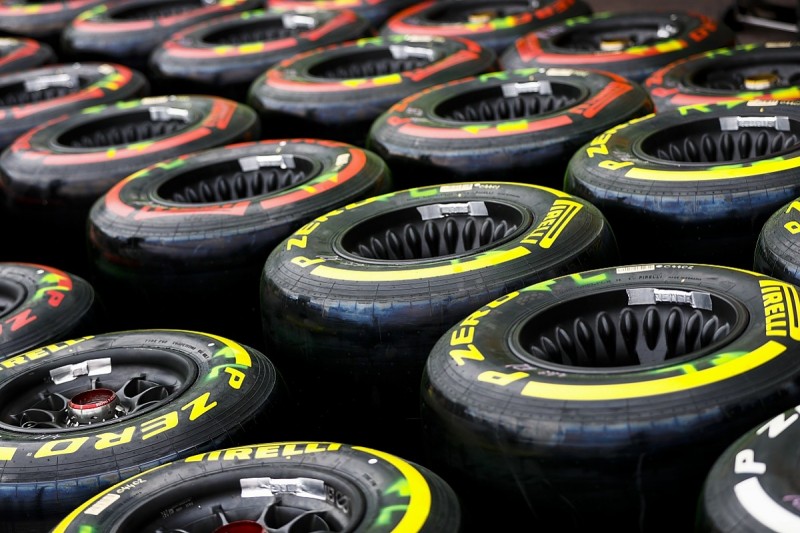 Road cars need treaded tires to disperse water and avoid aquaplaning.
Road cars need treaded tires to disperse water and avoid aquaplaning.
Another key difference is that Formula 1 tires are much larger than road car tires. This once again increases the surface area of rubber that touches the tarmac, which provides the cars with much more grip. Formula 1 cars travel at much faster speeds than road cars, especially when cornering, so the extra grip is essential.
Formula 1 tires cost about $3,000 per set, which is a lot more expensive than average road car tires. In addition, Formula 1 teams use multiple sets of these tires in one race weekend. While the tires on a road car have been designed with durability in mind, Formula 1 tires have been designed with performance in mind.
Road car tires can last up to 50,000 miles, whereas most Formula 1 tires will only last a maximum of 120 miles. The full race distance that Formula 1 cars complete is 190 miles. However, this does not mean that Formula 1 tires are badly designed.
Formula 1 cars can sometimes corner at speeds of up to 190 miles per hour, and in some cases their average speed around a lap is 150 miles per hour. In order to cope with these extreme cornering forces, Formula 1 tires require a special kind of endurance that your average road car tires would never be able to withstand.
Final ThoughtsF1 tires usually last anywhere from a few laps to almost the full race distance. The hard compound tires are the most durable, and they can last around 120 miles (20-50 laps), depending on several conditions, such as the driver’s ability, track conditions, and the specific compound used.
The first Formula 1 World Championship took place in 1950 - a whopping 69 years ago. If you look at the Alfa Romeo 158 car of the Championship winner, Italian Giuseppe Farina, you can see that the diagonal Pirelli tires of 5.50x17 "in front and 7. 00x18" in the rear on that car resembled ordinary road tires, and the pilot was not even wearing a seat belt .
00x18" in the rear on that car resembled ordinary road tires, and the pilot was not even wearing a seat belt .
However, equipped with a one and a half liter 350-horsepower V8 with a drive compressor, that car was capable of accelerating to 290 kilometers per hour! It is not surprising that the death of riders during the competition was not something out of the ordinary then. Over the years, Formula 1 cars have constantly progressed, of course, this also applied to tires.
Engineers constantly worked on the aerodynamics of cars, their power grew. That is why, by the early sixties, the rear tires of Formula 1 cars were much wider than the front ones. More compact front tires reduced drag coefficient, while wide rear tires helped maximize torque transfer to the track.
Increasing the width of the tires increased the contact patch, and therefore the coefficient of adhesion with the surface, making the car faster both when accelerating and when cornering.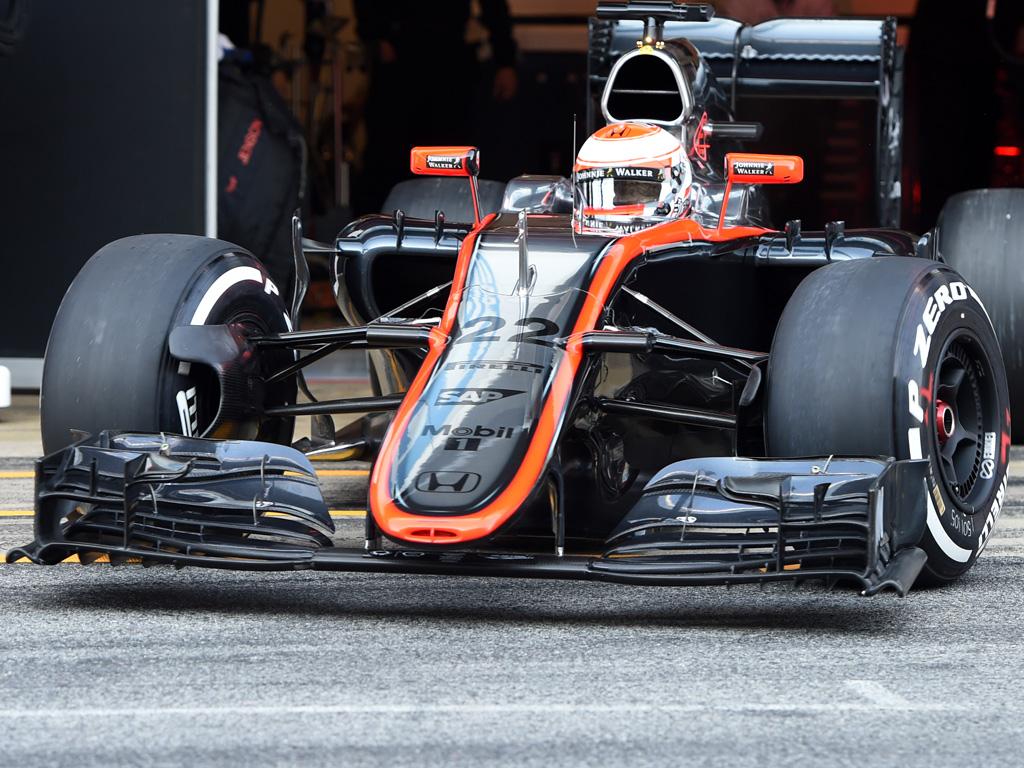 In addition, in 1966, the regulations allowed the use of massive and powerful volumetric three-liter engines. "Formula" grew in size, as well as their tires - in width.
In addition, in 1966, the regulations allowed the use of massive and powerful volumetric three-liter engines. "Formula" grew in size, as well as their tires - in width.
Perhaps the most important moment in the history of the evolution of Formula 1 tires was the advent of slicks. The first company to offer a radical improvement in traction by eliminating the tread pattern was the American brand Goodyear, which introduced slicks in season 19.71 years old. It is not surprising that the novelty came from the USA - by that time, slicks had been used overseas for two decades in dragster racing.
GoodYear slicks at the 1977 Danish Grand Prix. Image: Wikipedia
Other manufacturers soon switched to slicks. Their only drawback was the obvious need to change tires to standard ones in heavy rain. In the absence of a tread, the slicks could not provide a sufficiently effective removal of moisture from the contact patch, and aquaplaning arose - the car simply floated up, losing grip on the track.
In 1977, the French company Michelin burst into the world of Formula 1, immediately offering a revolutionary new product - radial tires, instead of the diagonal ones used at that time. At that time, only the newcomer to the championship, Renault, appreciated the advantages of Michelin radial tires.
Renault's first F1 car - RS01, with Michelin radial slicks. Image: Wikipedia
The first tests showed that radial tires are stiffer, deform less during acceleration and cornering, provide better grip and lighter weight. Already at 19Carlos Reitemann of Ferrari won the first Grand Prix on these tires in '78. Within three years, all other tire manufacturers had given up to the onslaught of Michelin - all the teams switched to French tires. But the retreat was tactical - the very next year, Goodyear, Pirelli and Avon returned to racing with their radial tires to give battle to the French. The great tire battle has begun.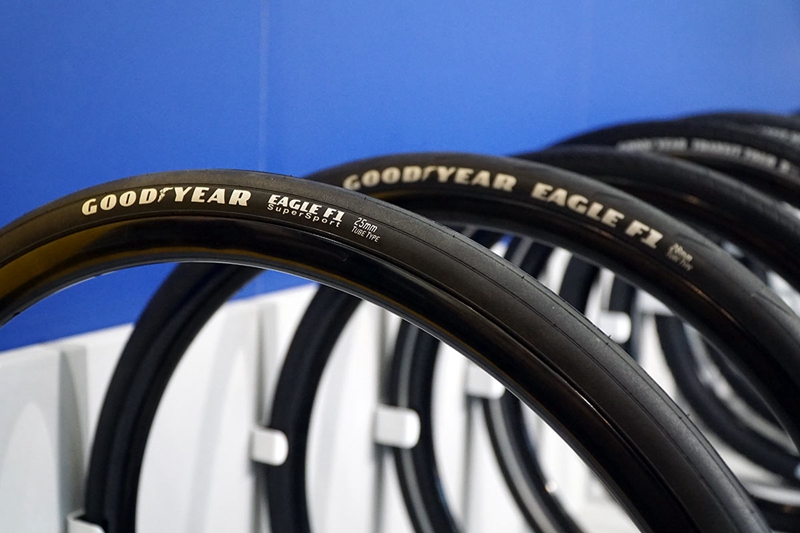
The next revolutionary invention in the history of Formula 1 was thermal covers for tires, which were invented by the English businessman Mike Drur. Up to this point, in cold weather, mechanics wrapped the tires in blankets, and the racers themselves warmed them up to operating temperature, losing precious seconds. Thermal covers were tested for the first time by the Williams team at the Spanish Grand Prix at 1986, and the result was stunningly good.
F1 tire in thermal bag. Photo: Artem Achkasov
Since then, electric thermal covers, which allow you to warm up tires to a predetermined temperature, have firmly become part of the everyday life of all Formula 1 teams.
Competition between tire manufacturers has become a real race. The constant development of the latest compound compositions cost a pretty penny, as a result, tired of costly competition, tire companies left Formula 1 one after another.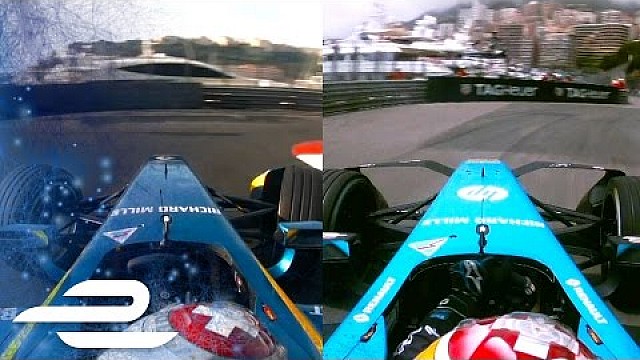 First, the Advan brand left the race, then Michelin. After season 1991 years old, Pirelli left, and Goodyear became the monopoly supplier for a long 5 years. In 1998, she left the Queen of Motorsport winning 368 Grand Prix - more than anyone in history. As a result, the Japanese company Bridgestone became a monopolist. After 3 years, Michelin returned to the tracks, and the tire war turned around again.
First, the Advan brand left the race, then Michelin. After season 1991 years old, Pirelli left, and Goodyear became the monopoly supplier for a long 5 years. In 1998, she left the Queen of Motorsport winning 368 Grand Prix - more than anyone in history. As a result, the Japanese company Bridgestone became a monopolist. After 3 years, Michelin returned to the tracks, and the tire war turned around again.
Today, in Formula 1, the exclusive tire supplier is again the Italian company Pirelli.
In the 2019 season, teams have the opportunity to use slicks in five levels of softness, designated from C1 (hardest) to C5 (softest).
Image: Pirelli
Which tires can be used on a particular Grand Prix is determined by the manufacturer - Pirelli.
Pirelli tires for the 2019 season. Image: Pirelli
Image: Pirelli
For example, in the Australian Grand Prix, drivers will use C2, C3, and C4 compounds, and in the next round in Bahrain, they will use C1, C2, C3 compounds. Depending on the type of compound, tires have a different temperature range:
○ C1 110-140°C
○ C2 110-135°C
○ C3 105-135°C
○ C4 90-120°C
○ C5 85-115°C
For ease of understanding by fans, these tires will have three relative designations - Hard, Medium and Soft, regardless of the specific compound number. Hard tires will have white markings on the sidewalls, medium tires will have yellow markings, and soft tires will have red markings.
Rain tyres. Photo: Artem Achkasov
For bad weather, so-called rain tyres, with minimal tread, are used. The most versatile are the “green” Intermediate tires, which work well both on dry and wet roads, allowing up to 30 liters of water to be removed from the contact patch at a speed of 300 km / h. The "blue" rain tires are designed for racing in heavy rain, allowing up to 85 liters of water to be ejected per second.
The "blue" rain tires are designed for racing in heavy rain, allowing up to 85 liters of water to be ejected per second.
Content
 5km
5km The first Formula 1 World Championship took place in 1950 - a full 69 years back. If you look at the Alfa Romeo 158 car of the Championship winner, Italian Giuseppe Farina, you can notice that the diagonal Pirelli tires of 5.50 × 17 ″ in front and 7.00 × 18 ″ in the rear on that car resembled ordinary road tires, and the pilot did not even was wearing a seat belt.
If you look at the Alfa Romeo 158 car of the Championship winner, Italian Giuseppe Farina, you can notice that the diagonal Pirelli tires of 5.50 × 17 ″ in front and 7.00 × 18 ″ in the rear on that car resembled ordinary road tires, and the pilot did not even was wearing a seat belt.
Alfa Romeo 158. Image: Wikipedia
However, equipped with a 1.5-liter 350-horsepower V8 with a drive compressor, that car was capable of accelerating to 290 kilometers per hour! It is not surprising that the death of riders during the competition was not something out of the ordinary then. Over the years, Formula 1 cars have constantly progressed, of course, this also applied to tires.
Engineers constantly worked on the aerodynamics of cars, their power grew. That is why, by the early sixties, the rear tires of Formula 1 cars were much wider than the front ones. More compact front tires reduced drag coefficient, while wide rear tires helped maximize torque transfer to the track.
Increasing the width of the tires increased the contact patch, and therefore the coefficient of adhesion with the surface, making the car faster both when accelerating and when cornering. In addition, in 1966, the regulations allowed the use of massive and powerful volumetric three-liter engines. "Formula" grew in size, as well as their tires - in width.
Perhaps the most important moment in the history of the evolution of Formula 1 tires was the advent of slicks. The first company to offer a radical improvement in traction by eliminating the tread pattern was the American brand Goodyear, which introduced slicks in season 19.71 years old. It is not surprising that the novelty came from the USA - by that time, slicks had been used overseas for two decades in dragster racing.
GoodYear slicks at the 1977 Danish Grand Prix Image: Wikipedia
Other manufacturers soon switched to slicks. Their only drawback was the obvious need to change tires to standard ones in heavy rain.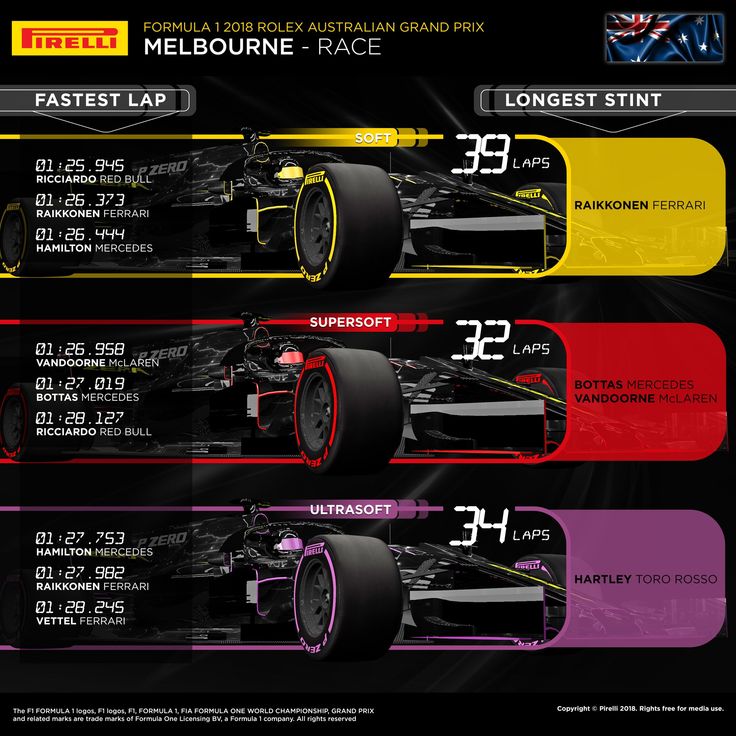 In the absence of a tread, the slicks could not provide a sufficiently effective removal of moisture from the contact patch, and aquaplaning arose - the car simply floated up, losing grip on the track.
In the absence of a tread, the slicks could not provide a sufficiently effective removal of moisture from the contact patch, and aquaplaning arose - the car simply floated up, losing grip on the track.
In 1977, the French company Michelin burst into the world of Formula 1, immediately offering a revolutionary new product - radial tires, instead of the diagonal ones used at that time. At that time, only the newcomer to the championship, Renault, appreciated the advantages of Michelin radial tires.
Renault's first F1 car, the RS01, with Michelin radial slicks. Image: Wikipedia
The first tests showed that radial tires are stiffer, deform less during acceleration and cornering, provide better grip and lighter weight. Already at 19Carlos Reitemann of Ferrari won the first Grand Prix on these tires in '78. Within three years, all other tire manufacturers had given up to the onslaught of Michelin - all the teams switched to French tires. But the retreat was tactical - the very next year, Goodyear, Pirelli and Avon returned to racing with their radial tires to give battle to the French. The great tire battle has begun.
But the retreat was tactical - the very next year, Goodyear, Pirelli and Avon returned to racing with their radial tires to give battle to the French. The great tire battle has begun.
The next revolutionary invention in the history of Formula 1 was thermal covers for tires, which were invented by the English businessman Mike Drur. Up to this point, in cold weather, mechanics wrapped the tires in blankets, and the racers themselves warmed them up to operating temperature, losing precious seconds. Thermal covers were tested for the first time by the Williams team at the Spanish Grand Prix at 1986, and the result was stunningly good.
F1 tire in thermosleeve. Photo: Artem Achkasov
Ever since then, electric thermocovers, which allow heating tires to a predetermined temperature, have become a staple of all Formula 1 teams.
Competition between tire manufacturers has become a real race.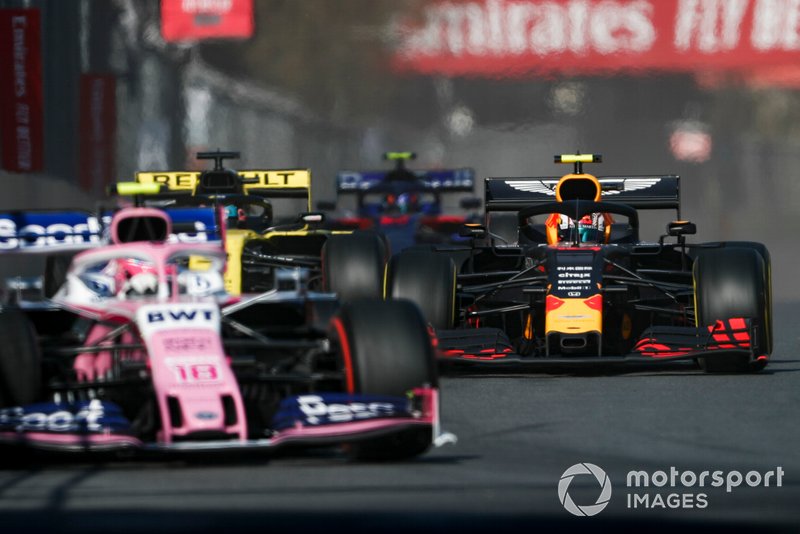 The constant development of the latest compound compositions cost a pretty penny, as a result, tired of costly competition, tire companies left Formula 1 one after another. First, the Advan brand left the race, then Michelin. After season 1991 years old, Pirelli left, and Goodyear became the monopoly supplier for a long 5 years. In 1998, she left the Queen of Motorsport winning 368 Grand Prix - more than anyone in history. As a result, the Japanese company Bridgestone became a monopolist. After 3 years, Michelin returned to the tracks, and the tire war turned around again.
The constant development of the latest compound compositions cost a pretty penny, as a result, tired of costly competition, tire companies left Formula 1 one after another. First, the Advan brand left the race, then Michelin. After season 1991 years old, Pirelli left, and Goodyear became the monopoly supplier for a long 5 years. In 1998, she left the Queen of Motorsport winning 368 Grand Prix - more than anyone in history. As a result, the Japanese company Bridgestone became a monopolist. After 3 years, Michelin returned to the tracks, and the tire war turned around again.
Renault Sport Formula One Team Tire Stand. Photo: Artem Achkasov
Today, the monopoly supplier of tires in Formula 1 is the Italian company Pirelli.
In the 2019 season, teams have the opportunity to use slicks in five levels of softness, designated from C1 (hardest) to C5 (softest). Pirelli
Pirelli
Pirelli tires for the 2019 season.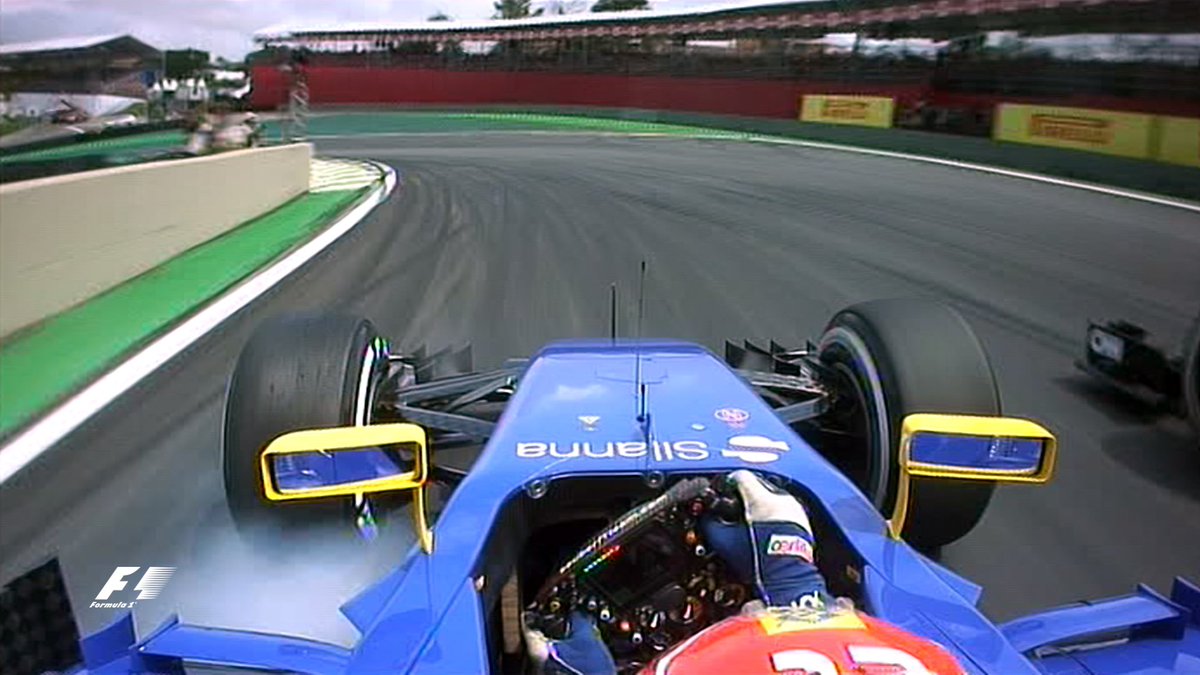 Image: Pirelli
Image: Pirelli
For example, drivers will use C2, C3, and C4 compounds at the Australian Grand Prix, and C1, C2, C3 compounds at the next round in Bahrain. Depending on the type of compound, tires have a different temperature range:
○ C1 110-140°C
○ C2 110-135°C
○ C3 105-135°C
○ C4 90-120°C
○ C5 85-115°C
For ease of understanding, these tires will be fans have three relative designations - Hard, Medium and Soft, regardless of the specific compound number. Hard tires will have white markings on the sidewalls, medium tires will have yellow markings, and soft tires will have red markings.
Rain tyres. Photo: Artem Achkasov
For bad weather, so-called rain tires are used, with a minimum tread. The most versatile are the “green” Intermediate tires, which work well both on dry and wet roads, allowing up to 30 liters of water to be removed from the contact patch at a speed of 300 km / h. The "blue" rain tires are designed for racing in heavy rain, allowing up to 85 liters of water to be ejected per second.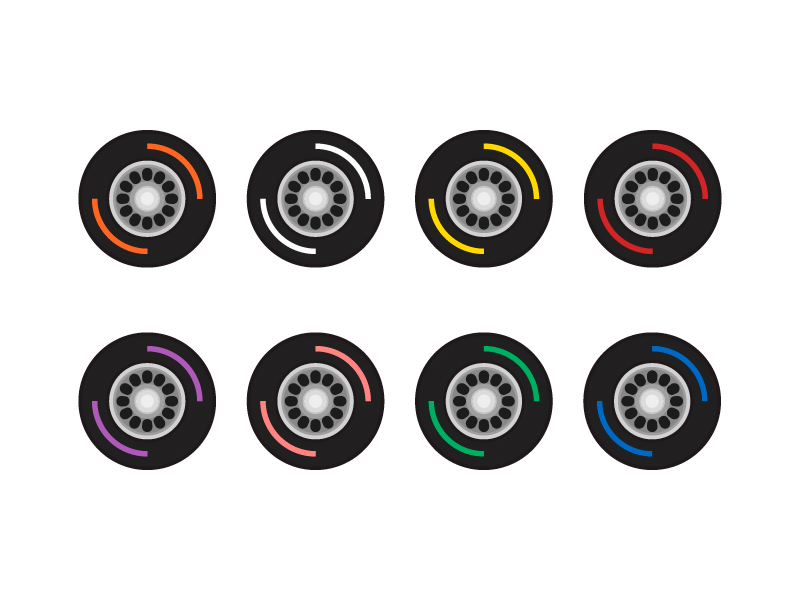
Source
We continue to study the terms from the world of Formula 1. In the second part of our collection, we will talk about types of turns, problems with tires and the pit lane.
- Square tires - ruin the tire and make it ineffective for work. This situation usually occurs when the rider suddenly slows down, locks the front brakes, and one of the wheels stops spinning. As a result of this, it slides on the asphalt, and the surface of the tire is erased. And given that the speed was abruptly dropped, the tire continues to have a rotational force. Therefore, the hot tire flattens slightly, and the overall shape of the tire changes slightly and becomes a little less round.
— Steering . Riders usually complain about two types of it - excessive and insufficient. The first occurs when there is a loss of traction on the rear wheels—i.e. skidding of the rear of the machine, which can lead to a subsequent turn.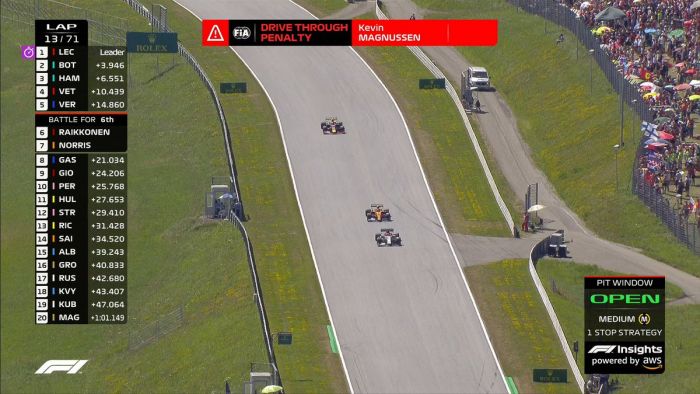 Understeer is a loss of traction on the front wheels. It leads to the fact that the car enters the turn with a smaller angle than the driver set the wheel. It can lead to flight.
Understeer is a loss of traction on the front wheels. It leads to the fact that the car enters the turn with a smaller angle than the driver set the wheel. It can lead to flight.
- Bald spot on tire . Like tire squaring, it occurs when a rider locks up the front brakes, one of the wheels stops spinning, it slides on the pavement, and the surface of the tire wears away. However, this is a lighter consequence of such blocking. As a result, part of the tire is erased. If, in the event of tire squaring, the pilots immediately rush to the pits for a new set of tires, then with a bald spot they can continue to move along the track. Although the efficiency of the rubber will also be reduced.
- Tire blistering - Occurs when a temperature imbalance between the hot inner carcass and the cold outer surface of the tire causes "micro tears" in the rubber on the surface of the tire. As a result, small holes appear on the surface of the tire (the effect is the same as after a burst bubble). Leads to a decrease in grip with the track.
Leads to a decrease in grip with the track.
— Paddock is the part of the race track where the motorhomes of the teams are located.
- Peloton - all cars that take part in the race.
— Pit lane is the part of the circuit where the team boxes are located.
- Pit stop - entry into the pit lane for tire changes and, if necessary, minor repairs (for example, replacing the front wing or a minimal change in settings).
— Curb — race track limiter. It is located in corners and in those places where drivers most often try to go off the track and thus gain an advantage. Curbs have different shapes. They are higher than the main level of the track, so the passage through them is noticeable for the rider, and may even damage the car.
- Heating (setting) disc . During free practice and qualifying, the first round after leaving the pits. In racing, the warm-up lap is the lap before the start of the race. In both cases, it is necessary in order to warm up the rubber. Its pilots overcome it at a lower speed than the main "combat" circles.
In both cases, it is necessary in order to warm up the rubber. Its pilots overcome it at a lower speed than the main "combat" circles.
- Slicks are tires that racers use in dry weather. Their difference from intermediate or rain tires lies in the complete absence of grooves - i.e. these are absolutely smooth tires.
- Slipstream is driving directly behind another vehicle in a dirty air zone. Being in it, the car loses downforce, gets a strong understeer and reduced air cooling of the engine. But the slipstream cars overcome less aerodynamic drag, so they can save fuel, delay the pit stop, or accelerate and overtake.
- Stop-and-go - a type of penalty when the driver enters the pit lane, stops near his pits and must stand there for a certain period of time (usually it is 10 seconds). During this time, mechanics are not allowed to touch the car.
- Telemetry - information about the values of the measured parameters. Each Formula 1 car is equipped with approximately 150 sensors that monitor all the important performance indicators of the car. All this information enters the team's boxes and allows you to monitor the performance of the car in real time.
All this information enters the team's boxes and allows you to monitor the performance of the car in real time.
— Hat-trick — an achievement when the pilot won the qualification, race and showed the fastest lap in one stage.
— Chicane is a small radius turn sequence used to intentionally slow down vehicles. Most often, these are two turns following each other, one of which is left, and the second is right. This results in an overall large S-shape twist. At the same time, these two turns have the same braking point (most often very sharp braking) and acceleration.
— Stud is a sharp turn with a radius of 90 to 180° that connects two straight lines.
- Esca - like the chicane, this is a bunch of turns in the shape of the Latin letter S. But unlike the chicane, these two small turns have different braking and acceleration points.
— Worms are small pieces of rubber. As the race progresses, they break away from the tires and accumulate outside the racing line.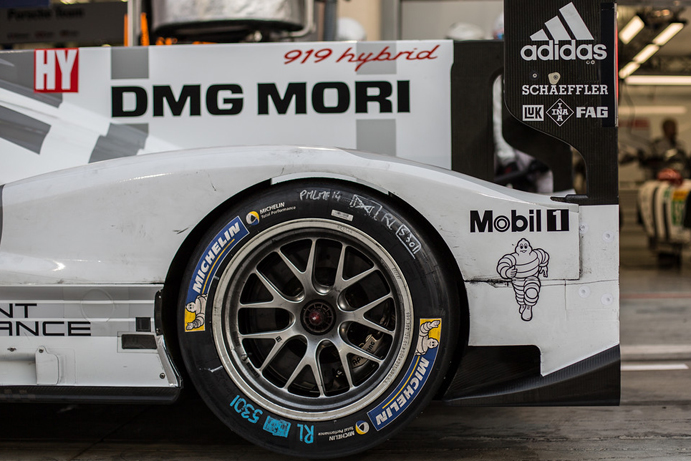 During the race, the pilots try to avoid them, as they can stick to the tires and reduce traction. But after the finish, racers often pass through these “worms”. In this way, they add some weight to the car in order to confidently pass the weigh-in after the race and invest in the allotted weight limits.
During the race, the pilots try to avoid them, as they can stick to the tires and reduce traction. But after the finish, racers often pass through these “worms”. In this way, they add some weight to the car in order to confidently pass the weigh-in after the race and invest in the allotted weight limits.
Source
Show the full technical potential of the car on the race track, help sports tires. Such tires are designed specifically for car races, taking into account the characteristics of the roadway. In addition to the auto racing industry, popular brands produce sports tires for public roads. Should I buy these wheels?
Car tires for sports driving, significantly different in material structure from conventional summer tires. The most high-tech ones are slicks. They can be seen on Formula 1 cars. These tires are completely smooth. A subcategory of these tires are semi-slicks. These wheels are characterized by a cut tread, which allows operation on public roads. Both types have a reinforced cord and a solid side profile, which eliminates structural failure. According to the composition of the material, slicks and semi-slicks are identical and are divided according to their properties:
These wheels are characterized by a cut tread, which allows operation on public roads. Both types have a reinforced cord and a solid side profile, which eliminates structural failure. According to the composition of the material, slicks and semi-slicks are identical and are divided according to their properties:
To change the elasticity, different amounts of silicone are added to the rubber composition. This material ensures that the tire adheres to the asphalt after heating.
Improved traction property, may annoy drivers who decide to operate semi-slicks on their car. The fact is that small pebbles stick to the tread, which then fly off at speeds up to 80 km / h, creating noise in the cabin. In addition, gravel knocks out wheel arches, sills, arches and the bottom of the car.
Compared to conventional tyres, all sports tires are low profile. Therefore, the car owner will have to buy the appropriate wheels, at least R18.
Tires of the slick type have no tread, which ensures the most stable contact patch with the road.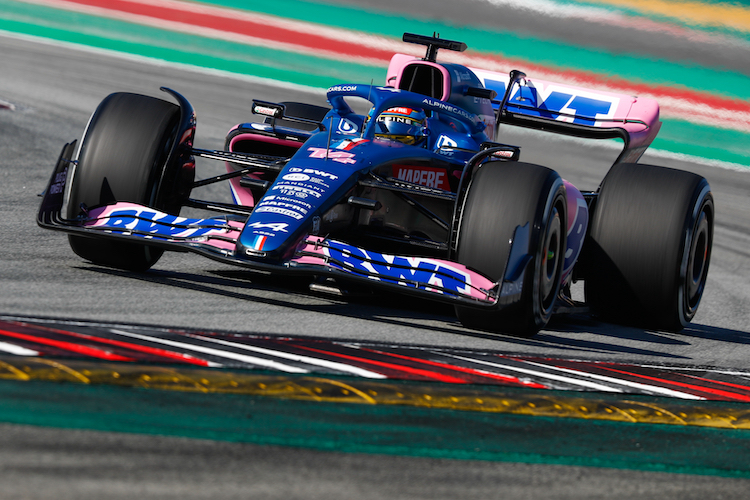 But, only dry. In the event of precipitation (rain), the car will slide on the wet surface, as a water wedge forms. The presence of a protector on the semi-slick avoids the effect of aquaplaning. At the same time, the tread thickens the tire, which increases its resistance to puncture.
But, only dry. In the event of precipitation (rain), the car will slide on the wet surface, as a water wedge forms. The presence of a protector on the semi-slick avoids the effect of aquaplaning. At the same time, the tread thickens the tire, which increases its resistance to puncture.
Which sports tires to choose for city driving? Soft tires are saturated with a large amount of silicone, which reduces the presence of carbon material (soot). The latter provides structural rigidity. Reduced soot in the composition, reduces the wear resistance of rubber. If you choose hard tires, then this is guaranteed to provide driving discomfort, worse grip in the contact patch and accelerated suspension wear. Therefore, for the city it is better to purchase wheels of medium hardness.
Sports tyre, gives the car an aggressive and beautiful appearance. This is exactly what young people love so much. However, do not forget the truth "beauty requires sacrifice. " Undoubtedly, sports tires have a lot of advantages. However, these wheels also have disadvantages. We list the strengths and weaknesses of sports tires.
" Undoubtedly, sports tires have a lot of advantages. However, these wheels also have disadvantages. We list the strengths and weaknesses of sports tires.
Low profile tires, increase the risk of damage to the rim when hitting a road pit. This is the most common damage (victim) faced by drivers.
It is impossible to install slick-type sports tires on a stock car. The operation of such wheels is prohibited by law. But semi-slicks, the car owner can deliver. However, such tires are only suitable for summer use, as the tread is designed for dry and even asphalt.
How to disassemble a tubeless wheel?
How to take apart a car wheel?
How to repair a tire yourself
How to remove and install wheel covers
Tire repair kit: when it comes in handy, composition, how to use
Wheel rim size - how is it indicated, how to choose
How to disassemble a tubeless wheel?
Tire sipes - what are they: types of sipes and purpose
Source
The word slick in English means "smooth", and this is the most obvious sign of slicks - the complete absence of any tread or protrusions.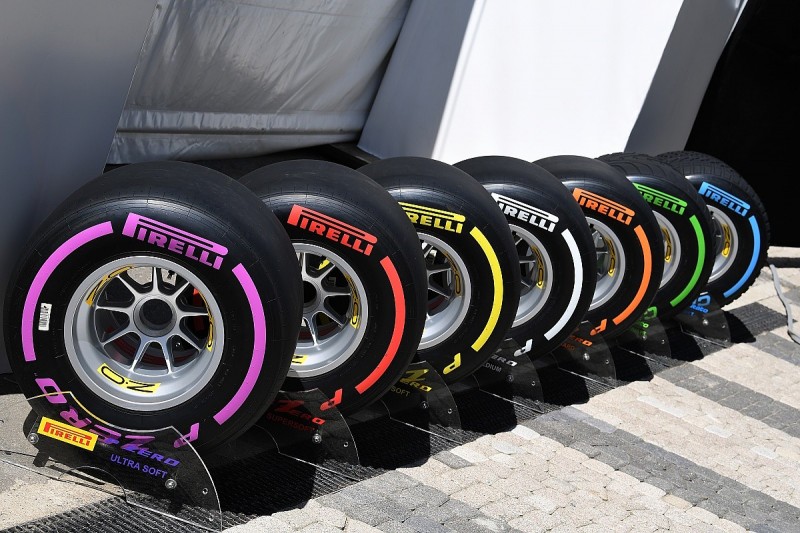 That is, the surface of the slicks is absolutely smooth. There is an opinion that this is the main difference between slicks and other tires, but this is not entirely true. First of all, slicks are characterized by low rubber stiffness (treadwear parameter). If for civilian tires it does not fall below 200 units, then for treadwear slicks it is around 80 units.
That is, the surface of the slicks is absolutely smooth. There is an opinion that this is the main difference between slicks and other tires, but this is not entirely true. First of all, slicks are characterized by low rubber stiffness (treadwear parameter). If for civilian tires it does not fall below 200 units, then for treadwear slicks it is around 80 units.
Thanks to this softness, the slicks seem to spread, increasing the contact patch, and as a result, significantly increasing the coefficient of adhesion to the roadway. Hence the requirement for the absence of a tread - such a soft tire with grooves at high speed would shatter into pieces in a matter of minutes due to uneven pressure and wear. However, even a smooth surface does not greatly increase durability, the usual resource for slicks is several hundred kilometers.
Semi-slicks are a more compromise option with increased stiffness (up to 150 units) and a simple tread pattern, usually in the central part. The presence of a tread allows semi-slicks to hold a wet road, unlike pure slicks. And the durability of semi-slicks is much higher. Therefore, they are much more widely used in semi-professional sports, and on public roads by especially sporty motorists.
The presence of a tread allows semi-slicks to hold a wet road, unlike pure slicks. And the durability of semi-slicks is much higher. Therefore, they are much more widely used in semi-professional sports, and on public roads by especially sporty motorists.
The scope of slicks is a purely professional sport on specially equipped tracks with the participation of trained, experienced pilots: Formula 1 (where slicks came from), drag racing, and so on. There are a number of reasons for this. First of all, slicks are quite expensive and their lifespan is ridiculously short. Secondly, they are not particularly effective in braking due to their softness. Thirdly, when it rains, they must be urgently changed to tires with a tread. Finally, slicks are very tricky in terms of handling.
As the speed increases, conventional tires gradually begin to “give up” - grip gradually decreases, which makes the driver involuntarily upset himself.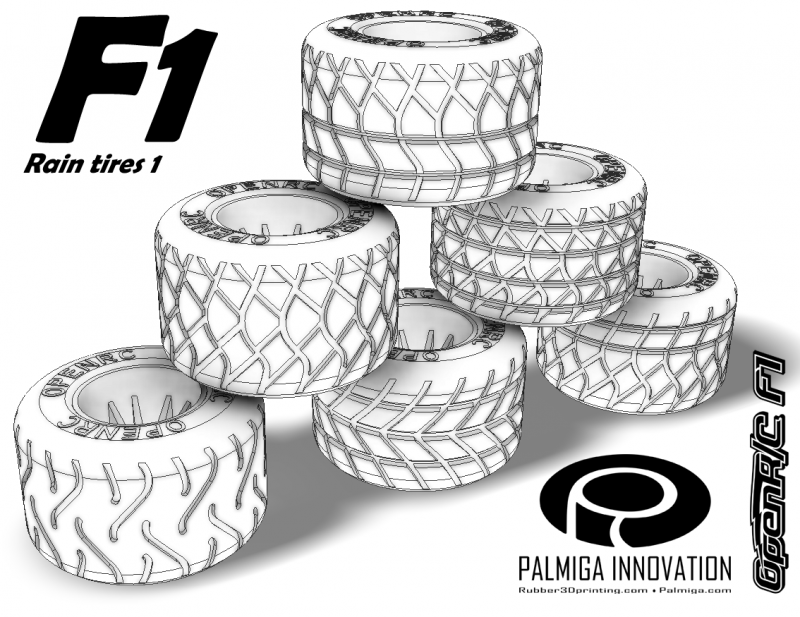 Slicks don't behave like that. They tenaciously hold the road to the last, giving the driver complete control. But as soon as you cross a certain limit, the slicks immediately and completely lose contact, and let the car go into a completely uncontrollable skid. Even for experienced professionals, this is very dangerous.
Slicks don't behave like that. They tenaciously hold the road to the last, giving the driver complete control. But as soon as you cross a certain limit, the slicks immediately and completely lose contact, and let the car go into a completely uncontrollable skid. Even for experienced professionals, this is very dangerous.
Putting slicks on for city driving is as crazy as buying a tank for fishing trips. In contrast, semi-slicks are more "down to earth" in terms of durability and weather conditions. You can also ride them in the rain - with great care, of course. But it is worth remembering that semi-slicks are still sports, professional tires. Using them on public roads is at least unjustified due to the low resource.
Professional riders who have experience with semi-slicks on normal roads note their "corrupting" effect on the psyche. The increased tenacity of the semi-slicks gradually provokes you to go faster and faster - for example, to enter a turn not at 50 km/h, but at 80 km/h. So it's better to leave the semi-slicks and their more radical bald counterparts to who they were designed for - professional racers on special tracks.
So it's better to leave the semi-slicks and their more radical bald counterparts to who they were designed for - professional racers on special tracks.
Source
The process of making racing tires for Formula 1 and FIA GT sports cars requires state-of-the-art equipment, cosmic precision and laboratory cleanliness. This is not surprising, as tires must operate at speeds in excess of 230 km/h and withstand operating temperatures of up to 100°C, while always providing incredible grip in conditions so harsh that they usually only last one race.
The production process begins in the workshop where the components of future racing tires are mixed: rubber, carbon, silicon and chemicals. All this is mixed in exact proportions; the composition of the mixture is a closely guarded secret of the multi-billion dollar motorsport industry.
Exact proportions of each element of the mixture are sent to the rubber mixer, which thoroughly mixes them and produces a "mat" of racing rubber.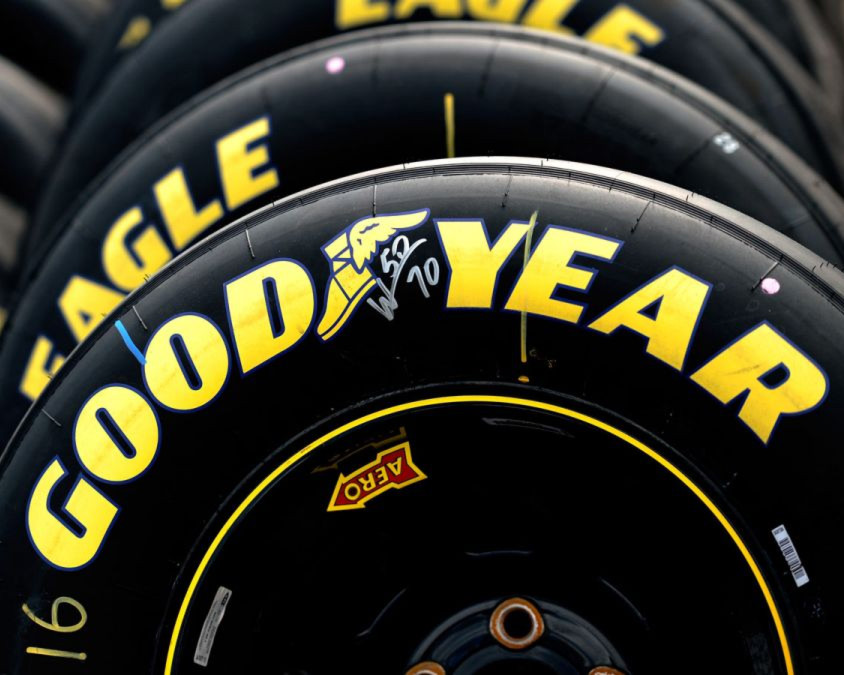 But rubber alone can't take the load of the tire, it's reinforced with heavy-duty lightweight nylon, which provides stiffness and resistance to high temperatures.
But rubber alone can't take the load of the tire, it's reinforced with heavy-duty lightweight nylon, which provides stiffness and resistance to high temperatures.
First of all, the very basis of the future racing tire is created. But the difficulty is that the base of only nylon with rubber will fall apart, so racing tires are reinforced with heavy-duty aramid threads.
Rings of threads are placed on both sides of the roller, two sheets of nylon with rubber are wound on the drum, after which the rings are pressed in from both sides. The machine wraps the carcass material around the rim to form an impenetrable bead.
Seam reinforcements are applied using laser guides. Rubber is a sticky material, so everything quickly connects, and the carcass of the future racing tire is ready. It takes an average of 5-6 minutes to produce one car tire.
But the carcass is just a part of the finished tire, it doesn't have a tread yet. For its production, rubber is fed into an extruder and heated to almost 100 °C. Special metal plates create the tire pattern, each plate has its own design.
Special metal plates create the tire pattern, each plate has its own design.
Heated rubber is passed through a matching plate to produce the desired tread from deep grooves for wet surfaces to smooth racing slicks that provide the best grip in dry conditions.
The finished carcass is still too soft to immediately connect with the protector, so a special belt is inserted between them. Its base is two rubber strips reinforced with metal. To further strengthen the racing tire, a racing thread is laid in a spiral, in addition, it helps to keep the shape of the tire. After that, a protector is applied.
The machine then places the reinforced belt over the tire carcass, which is then inflated. The pressure created is enough for the layers to adhere, and as a result, a whole wheel is obtained.
All work requires the highest precision to make not just a tire, but a high quality tire, plus hygiene in the factory. It is very important, because even a small speck of dirt can ruin the delicate rubber of a racing tire.
Therefore, the whole factory is constantly cleaned and cleaned, even the floor covering is changed twice a year. The shop air conditioner purifies the air and maintains exactly 24°C, the optimum temperature for a stable racing mixture.
The only place where it's hotter is the curing shop. Here, future racing tires are heated in huge ovens to firmly connect (sinter) different layers. As the tire heats up, the sulfur mixes with the rubber molecules and makes them stiffer. After 20 minutes, a strong racing tire falls onto the conveyor, but it is not quite ready for the track yet.
First, it must pass the quality control. An x-ray photograph is taken to check how fit the super tire is for a super car. Tires that pass the test are sent to car stables around the world. Maybe they are enough for just one race, but they will allow three lucky people to swim in champagne!
Truck tires are also made using a similar technology. After all, like racing ones, they experience enormous loads, but at the same time, they must ensure high performance and a long service life. Michelin truck tires, in this sense, are suitable in all respects. However, I recommend mounting / dismantling and installing Michelin tires only by professionals, for example, at Shinoremont LLC, who know the process like the back of their hand!
Michelin truck tires, in this sense, are suitable in all respects. However, I recommend mounting / dismantling and installing Michelin tires only by professionals, for example, at Shinoremont LLC, who know the process like the back of their hand!
The screeching case: you have a sports car, you've booked track time, and now you need sports tires. We chose four sets of tires from four different manufacturers. Want to get to know them better? Details around the next corner!
A day on the track goes something like this: for half an hour you get used to the track, do 15-20 laps in one session, and for the rest of the time, watch someone else burn rubber on the track. We've found that the original car tires you buy your sports car with are only good for three to five laps on the track, then they overheat and lose their grip on the road. Which means you have to spend your pre-paid time driving at turtle speed to let your "sport" tires cool down. Therefore, you are wasting money without getting the expected pleasure. So getting specialty racing tires isn't all that crazy, even if they're expensive, even if you have to lug them along with your jack on the track. But they will allow you to spend more time on the track, learn more skills, and show a master class to your comrades, who, against your background, will seem like helpless insects. Make a gift for yourself as a driver. Love yourself beloved, as well as your "iron horse" in new sports horseshoes!
Therefore, you are wasting money without getting the expected pleasure. So getting specialty racing tires isn't all that crazy, even if they're expensive, even if you have to lug them along with your jack on the track. But they will allow you to spend more time on the track, learn more skills, and show a master class to your comrades, who, against your background, will seem like helpless insects. Make a gift for yourself as a driver. Love yourself beloved, as well as your "iron horse" in new sports horseshoes!
Having finished our research in the field of "High-tech for the car", we went to the race track and tested for you four sets of sports tires in turn, an overview of which we present to your judgment.
1. Mazda Raceway Laguna Seca's famous Corkscrew turn is well known, but there are equally dangerous Turns Nine and Four. It is these corners that separate really good tires from just good ones.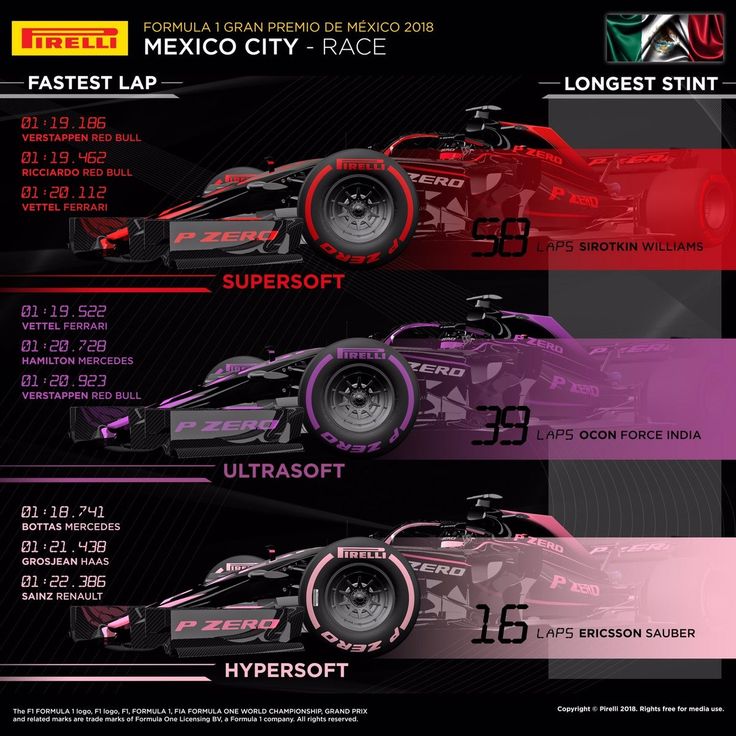
2. Turn Nine or Curve Rulney
3. Decreased traction is crucial in this corner: the car loses up to 72 km/h in just 30 meters.
4. At the turn of the Hairpin Andretti Toyo and BFG are ahead of the others neck and neck, namely at a speed of 68-72 km/h with a lateral thrust of 1.0
tires here show a speed of 129 km / h, losers show a speed of 122-125 km / h.
6. Turn Four
We were very impressed with the Roxes R888s tires. By the second lap they warmed up and stuck to the track perfectly, delivering performance much higher than other sports tires in this price category. While they are the least expensive on our list, they have excellent cornering performance and are extremely durable (based on several 30 minute test runs). A discreet, reassuring squeal accompanies these tires, providing an audible signal when they are nearing their limit. However, don't count on Proxes to live forever. When one of Mazda's most affordable race-class sports cars, the Mazda Miata, switched to R888s tires, drivers complained that they weren't as hard-wearing and durable as the Toyo RA1s they had used before, so the brand went back to them.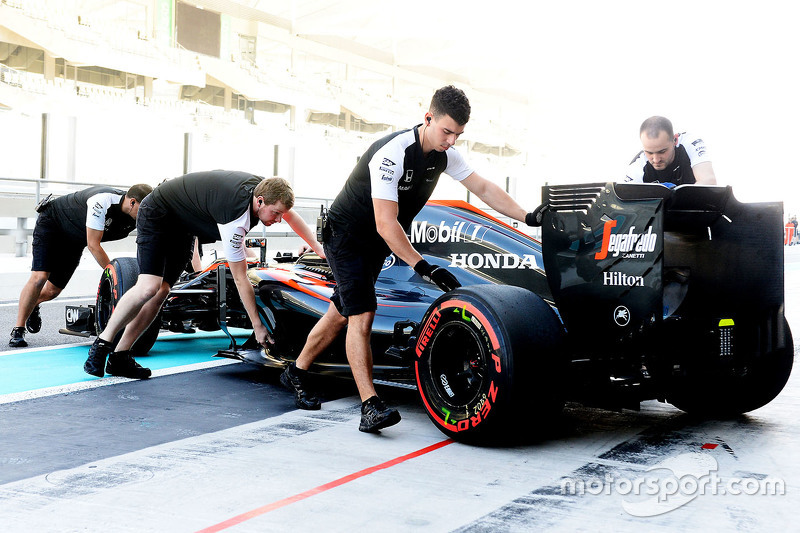 To be frank, the ever-poor riders want to get the most out of their expensive sport tires, and with these tires we saw the first signs of performance disappear by the end of tire testing. In short, the R888s are a pretty good set of racing tires, especially if you're new and don't plan on getting the most out of your car.
To be frank, the ever-poor riders want to get the most out of their expensive sport tires, and with these tires we saw the first signs of performance disappear by the end of tire testing. In short, the R888s are a pretty good set of racing tires, especially if you're new and don't plan on getting the most out of your car.
The g-Force R1 tires are separated by only two radial grooves from completely bald racing tires. They have barely received a road safety certification and are sold exclusively as an add-on to the main set of tires. Their hard sidewalls, which feature eye-catching tire markings, are a true gem of every Miata in the Playboy Cup Mazda MX-5, arguably America's fiercest stock street racing. As standard rubber, these tires can be compared to samurai swords. In order to warm them up, it will be enough for you to do a warm-up of one or two circles, after which the rubber turns into black superglue. Even after 30 minutes of a hot session, cornering and drifting are top notch. The limit of these sports tires is incredibly high, but if the grip is lost, it disappears suddenly. If this happens next to a wall, then you'll be lucky if you don't decorate it. So if you're new to racing, you need to start with race tires that aren't as durable and wear out much sooner, softer, and noisier. Before you buy an R1, it is worth wearing out more than one set of easier tires. Or stay away from the race track and change into those "rubber socks" to make your vehicle the best car for drifting.
The limit of these sports tires is incredibly high, but if the grip is lost, it disappears suddenly. If this happens next to a wall, then you'll be lucky if you don't decorate it. So if you're new to racing, you need to start with race tires that aren't as durable and wear out much sooner, softer, and noisier. Before you buy an R1, it is worth wearing out more than one set of easier tires. Or stay away from the race track and change into those "rubber socks" to make your vehicle the best car for drifting.
AmEx Platinum Choice. The Pilot Sport Cup are tires that, in various forms, come standard with cars like the Porsche 911 GT3, Dodge Viper ACR and other fast cars. No one will question your taste if you put a set of these crumbs on the wheels of your sports car. As we hit the track, we were surprised to find that these sport tires could only come in at number three in our rankings, falling short of the R1 and R888s in grip and driving agility.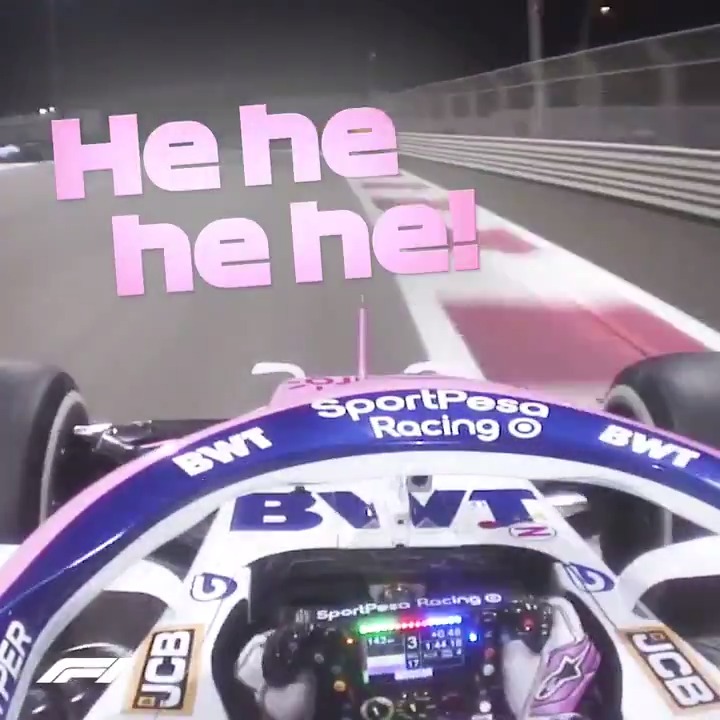 Slower corner entry and less confident lateral traction in fast corners initially raised our eyebrows very high in surprise, however over time their performance proved to be more consistent than the R888s. In order to improve their stickiness, and, accordingly, traction with the road surface, tires must be properly warmed up. These are the requirements for feeding and caring for this exotic rubber. Like most expensive products, Michelin Pilot Sport Cup tires are built to last you long enough, even if you have to make some compromises to get there.
Slower corner entry and less confident lateral traction in fast corners initially raised our eyebrows very high in surprise, however over time their performance proved to be more consistent than the R888s. In order to improve their stickiness, and, accordingly, traction with the road surface, tires must be properly warmed up. These are the requirements for feeding and caring for this exotic rubber. Like most expensive products, Michelin Pilot Sport Cup tires are built to last you long enough, even if you have to make some compromises to get there.
Compared to other tires we've tested, the older design of these tires further confirms their slipperiness, lack of grip, accompanied by serious screeching and less responsive steering. Advan A048 during the 30-minute session were quite consistent, but decidedly weaker than their opponents. Yokohama claims that the American version of their sports car tire features stiffer, more durable compounds than those sold in Japan for autocross.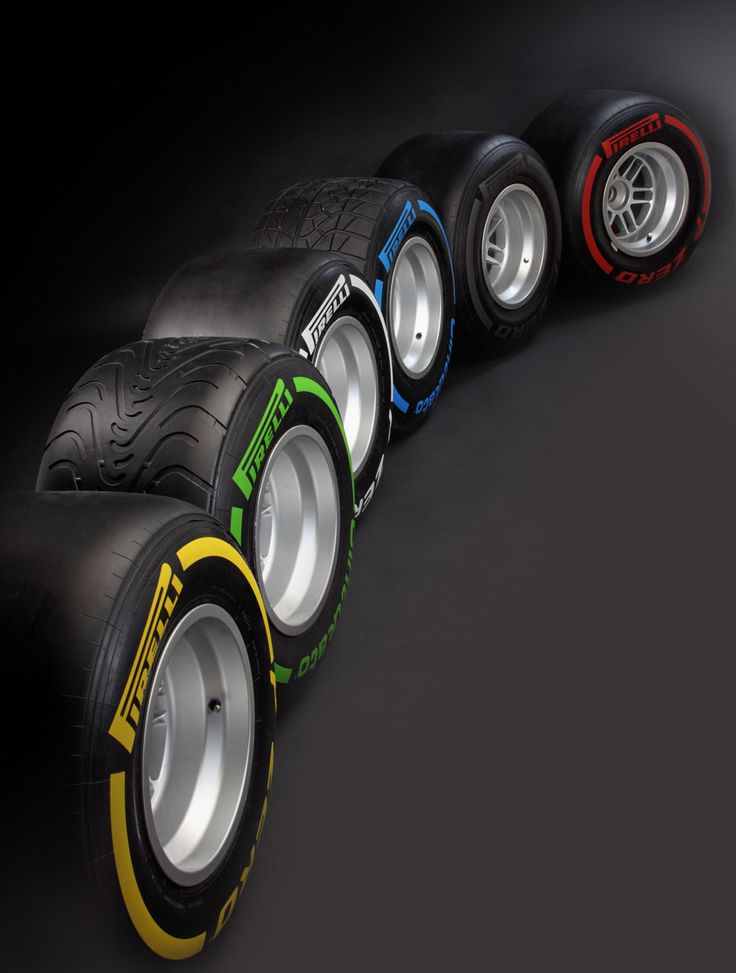 The company says there is too little demand in the U.S. for really sticky (good traction), fast wearing racing tires, so these A048s are geared towards those who don't want to lug a jack onto the track to change their tyres. but still want to show class on the track. Maybe that's why these tires are popular with Lotus Elise owners, who are probably much more likely than other motorists to combine road and track. Yokohama also recommends trying the AD08 tires, which are just as efficient as the A048 but show better wet performance.
The company says there is too little demand in the U.S. for really sticky (good traction), fast wearing racing tires, so these A048s are geared towards those who don't want to lug a jack onto the track to change their tyres. but still want to show class on the track. Maybe that's why these tires are popular with Lotus Elise owners, who are probably much more likely than other motorists to combine road and track. Yokohama also recommends trying the AD08 tires, which are just as efficient as the A048 but show better wet performance.
The vehicle on which we tested our four sets of 225/40ZR-18 sports tires was provided by Mazda. This is the base version of the 2010 RX-8 Sport. The tests were carried out over two days on a track 3.5 km long. The tires were inflated with air instead of nitrogen as many racers do. Weighing more than 1.4 tons, the RX-8 features cat-like balance, stiff brake pads, and a suspension so tuned that the car could easily take on a Porsche 9.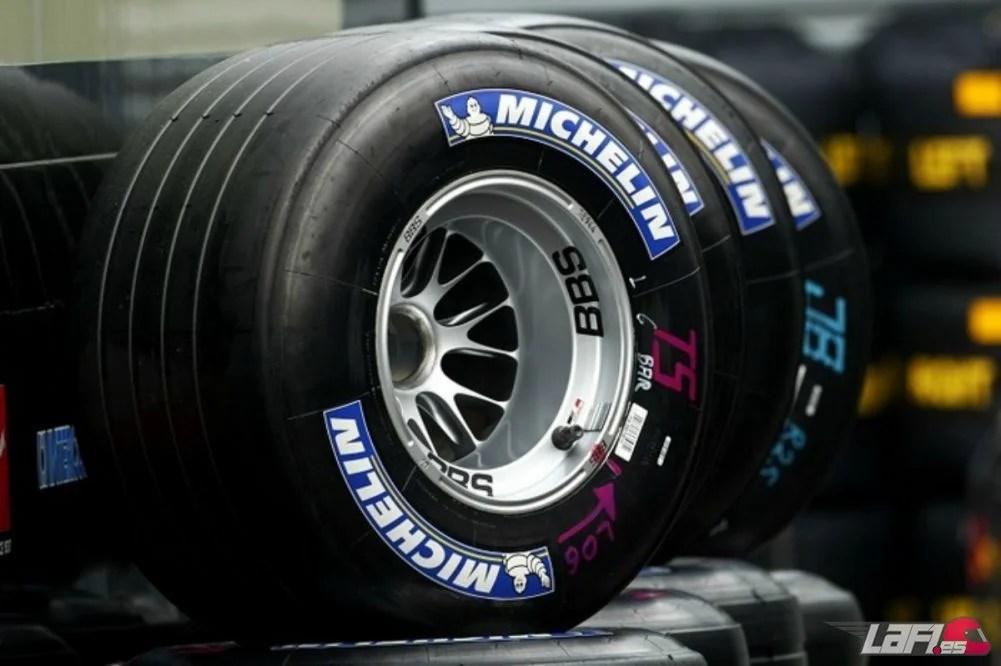 11 and BMW M3.
11 and BMW M3.
This article describes the main types of car tires that have found application in amateur and professional motorsports.
Excellent traction in deep water and low temperatures They are recommended for use in rainy weather.
Published on December 17, 2015
Today, December 17, teams must finally decide on the types of tires they will use in the first race season-2016. We will find out the choice for each pilot just two weeks before the Grand Prix. By the start of the season, we will already know which three compounds Pirelli will bring to the races of the first half of the season.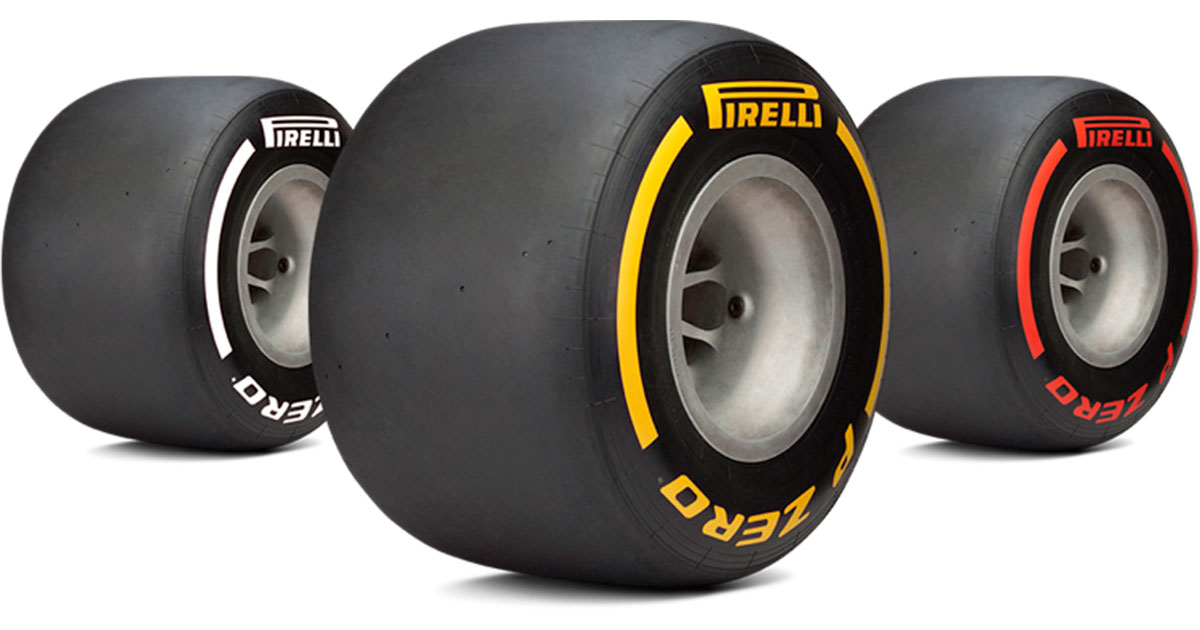 In the meantime, we offer to plunge into the tire history of Formula 1 and remember the times when everything was much easier.
In the meantime, we offer to plunge into the tire history of Formula 1 and remember the times when everything was much easier.
But there is very little more or less reliable information on this matter. And this is very strange, because modern engineers consider tires one of the most important parts of a racing car. This is the situation now, and in the 1950s, no one really thought about it. It was important to build a powerful engine and a reliable car in general. On one set of tires, they often rode not one, but several races. Teams, depending on the track and tire characteristics, often changed suppliers - several times per season. Therefore, at first there was not one, as now, and not even two manufacturers. Yes, at 19In 1954 and 1958, the teams were "shoeed" by six different tire manufacturers - Avon, Continental, Dunlop, Englebert, Firestone and Pirelli.
At first, racing tires were almost identical to road tires, and no one thought about traction until the late 1960s. By that time, due to the growing power of the engines, the tires had become “fat”, but they still had a tread. At the same time, almost “bald” tires appeared. There were still a few shallow convolutions in it, which were erased during the race. Wait, slicks have been in full use in drag racing since the 1950s, but such tires could not withstand the loads in high-speed corners. The tire manufacturers worked on this until 1971. Here again I would like to remind you that there is not very much reliable information about the debut of slicks. According to some sources, slicks were first used in South Africa, according to others - in France (Goodyear) and Spain (Firestone). Nevertheless, by the end of the championship, only rubber without a tread was put on the cars (of course, only in dry weather).
By that time, due to the growing power of the engines, the tires had become “fat”, but they still had a tread. At the same time, almost “bald” tires appeared. There were still a few shallow convolutions in it, which were erased during the race. Wait, slicks have been in full use in drag racing since the 1950s, but such tires could not withstand the loads in high-speed corners. The tire manufacturers worked on this until 1971. Here again I would like to remind you that there is not very much reliable information about the debut of slicks. According to some sources, slicks were first used in South Africa, according to others - in France (Goodyear) and Spain (Firestone). Nevertheless, by the end of the championship, only rubber without a tread was put on the cars (of course, only in dry weather).
Engineers were constantly experimenting with the size and number of wheels. And the most striking creation was the Tyrrell P34. The fourth race on this car gave the team a winning double due to a larger clutch patch. But Ken Tyrrell did not agree with Goodyear.
But Ken Tyrrell did not agree with Goodyear.
In the middle of the 1977 season, Michelin decided to challenge Goodyear and entered Formula 1 with radial tires. Six months later, Bibendum, together with Ferrari, celebrated the first victory in the race, and a little later in the entire championship. Radial tires turned out to be softer and held the track better - all the teams moved to the French tire manufacturers. But the rivals were not going to retreat and returned to the championship with their proposals. The first tire "arms race" began. Michelin, and Goodyear, and Pirelli, and even Avon were forced to invest huge sums in the development and testing of new tire designs and rubber compounds. As a result, the French, despite the successful 19'84, closed the formula program, leaving the Americans to reign supreme in the Queen of Motorsport.
Something without which it is impossible to imagine a modern car before the start of the race and that they repeatedly tried to abolish, appeared at the end of 1985 and did not have much demand. As you may have guessed, we are talking about tire warmers. The rapid deterioration of cold tires forced the team's engineers to warm them with ordinary blankets, but this did not really save the situation. Businessman Mike Drury came to the rescue. He came up with heating pads while watching the European Grand Prix at Brands Hatch. At 1986 in Spain, after much persuasion, Williams decided to use Mike's invention and did not lose. Mansell, after a pit stop on which heated wheels were installed, began to pass his rivals one by one and almost won the race. Since then, the Drury-founded company has been supplying heating pads to virtually every team in the peloton.
As you may have guessed, we are talking about tire warmers. The rapid deterioration of cold tires forced the team's engineers to warm them with ordinary blankets, but this did not really save the situation. Businessman Mike Drury came to the rescue. He came up with heating pads while watching the European Grand Prix at Brands Hatch. At 1986 in Spain, after much persuasion, Williams decided to use Mike's invention and did not lose. Mansell, after a pit stop on which heated wheels were installed, began to pass his rivals one by one and almost won the race. Since then, the Drury-founded company has been supplying heating pads to virtually every team in the peloton.
After Goodyear's departure, Bridgestone's monopoly lasted two years before Michelin's return spawned a new tire war. Trying to curb it, the FIA in 2005 forbade changing wheels during the race. Ferrari, which has dominated in recent years, has lost its advantage. But Bibendum's customers also often suffered from insufficient endurance of French tires. After a scandal in the USA, when only 6 cars entered the start line due to problems with Michelin tires, it was decided to lift this strange ban.
After a scandal in the USA, when only 6 cars entered the start line due to problems with Michelin tires, it was decided to lift this strange ban.
To contain the rising costs of research and testing, the Federation introduced another dubious innovation - one tire supplier for all. Michelin reasonably considered this unacceptable and hastily left the championship. So in 2007, the era of the tire monopoly began in Formula 1. And two seasons later, Big Prizes returned to slicks.
In 2010, the Japanese were also not interested - they gave way to Pirelli, who agreed to try to solve an absurd task: to make tires that would wear out quickly. Since then, the Italians have been criticized all the time, and they are forced to justify themselves and invent some kind of innovation. Their latest idea could save the day. If there is no desire to cancel the monopoly, then why not diversify the tire stiffness options and allow the teams to decide on tires themselves.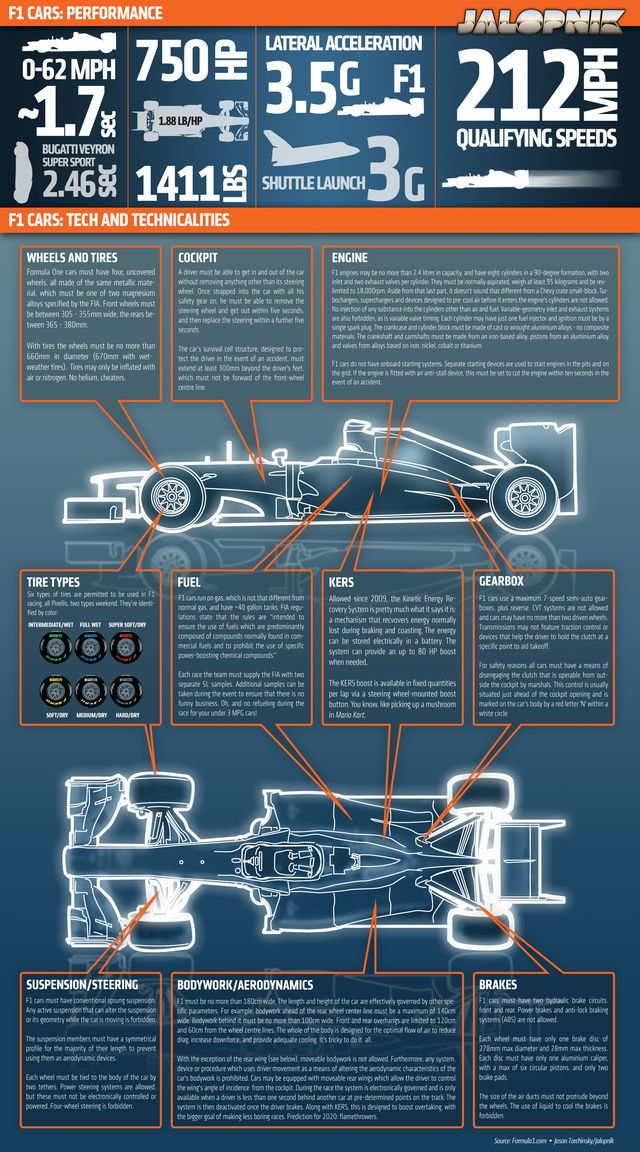
Due to logistical issues, the teams were required to make their tire choice 3 months before the Grand Prix (fortunately, this only applies to away races). Yes, shipping tires by sea to Australia takes a lot of time, but this whole idea can eventually turn into only an illusion of choice - without testing and understanding the features of new lineups, all teams will most likely prefer the same conservative set proposed by the tire manufacturers themselves.
Renowned tire manufacturer Pirelli applies its racing experience to the development of road tires. Compared to a regular road tire, a racing tire has a wider width, a stiffer carcass and high shoulder areas.
Road tire has a deep tread pattern and a tough tread compound for long life. It is designed for tens of thousands of kilometers, while the racing one can withstand only 100, but in the most difficult conditions.
On wet surfaces, racing tires expel approximately 50 liters of water per second due to the wide groove tread.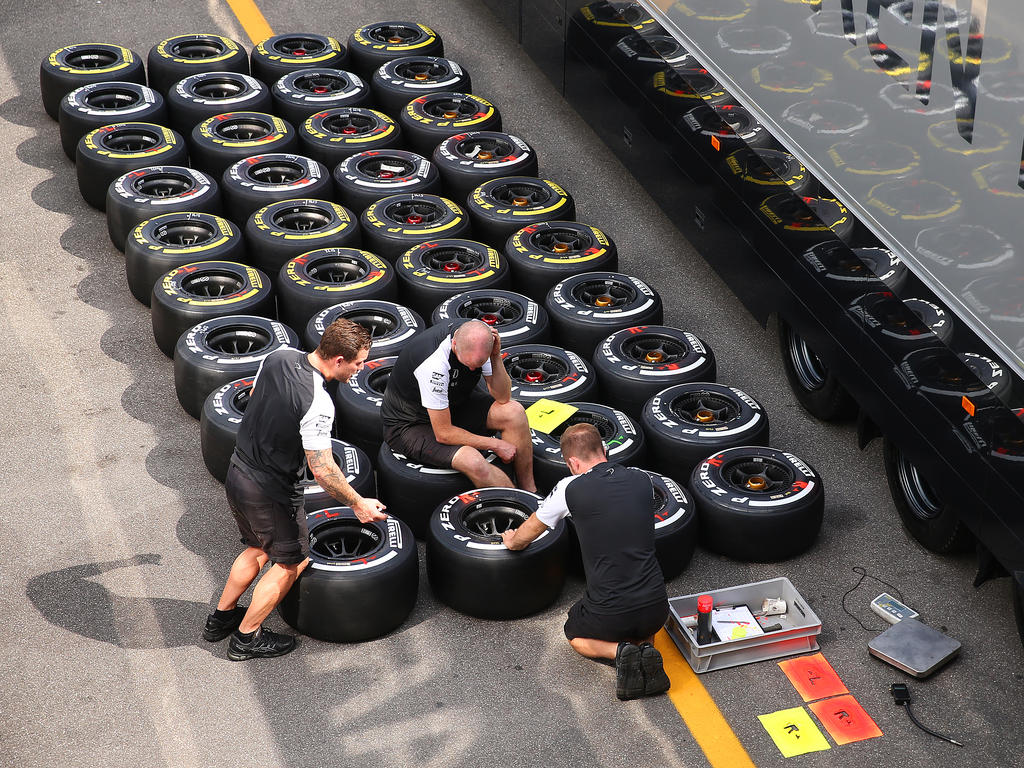 The soft rubber compound, combined with aerodynamic loads, provides stability at high speeds, a stable contact patch with the surface and complete control over the car. Road tires drain about 10-12 liters of water per second. This is quite enough for the absolute safety of any type of car.
The soft rubber compound, combined with aerodynamic loads, provides stability at high speeds, a stable contact patch with the surface and complete control over the car. Road tires drain about 10-12 liters of water per second. This is quite enough for the absolute safety of any type of car.
When cornering, the road tire can withstand a load of 1 G, which guarantees comfort and safety. The racing tire offers maximum performance at high speeds and can withstand side loads of up to 4 G.
The rubber's high operating temperature of over 100 degrees Celsius also contributes to effective traction. When braking, grip is especially important. If a conventional car generates a longitudinal load of 1 G, then for a car that slows down from three hundred and thirty to eighty kilometers an hour in about 3 seconds, this value reaches 5 G.
The excellent traction that racing tires provide allows you to make the most of the engine's power reserve to accelerate the car. An ordinary car accelerates from zero to sixty kilometers an hour in 5-6 seconds, during the same time a racing car picks up speed of 100 kilometers an hour or more, and in the next 5 seconds the speed of the car doubles.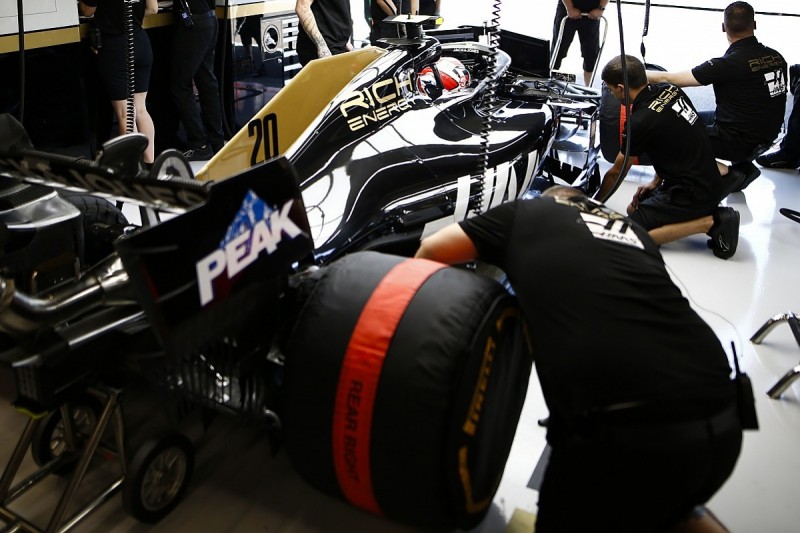
The difference in speed, traction and stability when maneuvering clearly proves that only racing tires can effectively cope with the tasks assigned to them.
As an ultra-high performance personal best tire, French manufacturer Michelin has unveiled a new semi-slick design, the Michelin Pilot Sport Cup 2 R, in which the R stands for Racing, a reference to speed racing. Read more Michelin Introduces Best Track Time Pilot Sport Cup 2 R Tires
2018 Pirelli Rainbow F1 Color Coded Slick Compounds
Last week at the Yas Marina circuit in Abu Dhabi, UAE, Pirelli showed off a new range of tires for the 2018 Formula 1 World Championship.
It will differ from the 2017 season assortment with a new color scheme and the use of two new rubber compounds. At the same time, the five rubber compounds used this year will become softer by next season, which, according to the manufacturer, should make the tires the fastest in the history of Formula 1. Read more Pirelli has introduced a new range of tires for the Formula 1 racing championship
Read more Pirelli has introduced a new range of tires for the Formula 1 racing championship
Porsche AG decided to present its 911 GT3 RS model with Michelin Pilot Sport Cup 2 ultra-high performance tires fitted to the front axle of the new Porsche in size 265/35 ZR20 and to the rear axle in size 325/30 ZR21.
Read more Porsche chooses only Michelin
Japan's Bridgestone has been selected as one of the tire suppliers for the 2015 Ferrari California T. New turbocharged V8 Ferraris will now leave the Maranello production line in Bridgestone sports rubber shoes Potenza S007 with Run-Flat Technology (RFT).
Read more Ferrari sportswomen exclusively use Bridgestone tires
Michelin North America and Spring Mountain Motor Resort and Country Club have extended their partnership with the introduction of a new racing version of the Pilot Sport GT, designed specifically for the Radical SR3 and SR8 sports cars.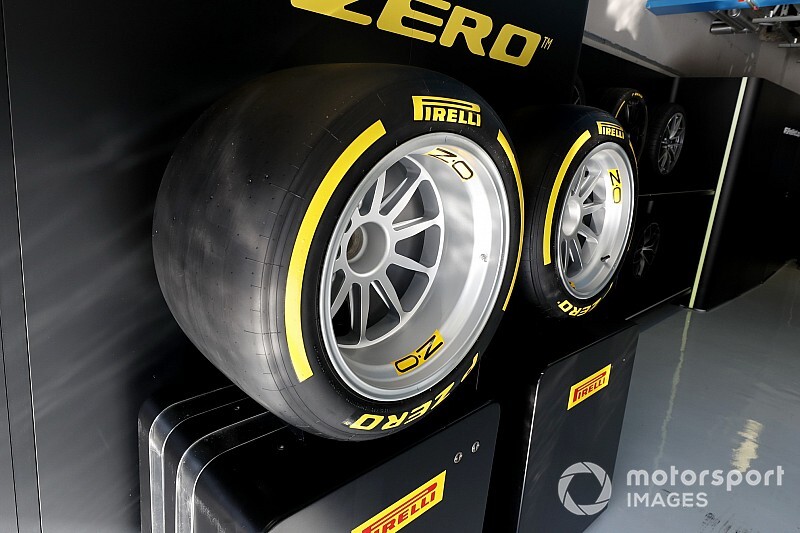
Read more Radical SR3 and SR8 track tires will be fitted with Michelin Pilot Sport GT tires
The North American division of the Japanese corporation Bridgestone has presented its latest development, ready for mass production. The new Bridgestone Potenza RE-71R ultra-high performance tires are designed for today's sporty sedans and coupes, whose owners cannot imagine life without high speeds and adrenaline.
Read more Sporty Bridgestone Potenza RE-71R will dilute the range of UHP tires
Michelin has developed special tires for the new Audi R8. Tires with 'RO1' markings on the sidewall are based on the Michelin Pilot Sport Cup 2 ultra-high performance model.
Read more expand the range of summer models by introducing new sizes for vehicles of all segments.
Read more Michelin for Summer: More Quality and Reliability Tires
Michelin North America has unveiled a new sport model from its sister brand to the automotive community.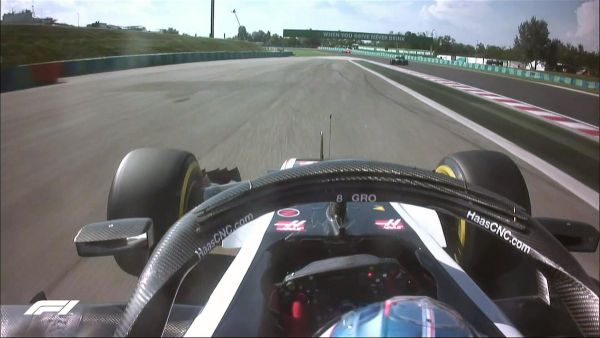 The BFGoodrich g-Force COMP-2 A/S is an ultra-high performance all-season tire that replaces the g-Force Super Sport A/S tire that most recently became Consumer Reports' favorite.
The BFGoodrich g-Force COMP-2 A/S is an ultra-high performance all-season tire that replaces the g-Force Super Sport A/S tire that most recently became Consumer Reports' favorite.
Read more Michelin launches BFGoodrich g-Force COMP-2 A/S 9 sportswoman0003
Germany's BMW AG has chosen Michelin Pilot Super Sport tires as factory equipment on the 21-inch wheels of its new high-performance models. Launched in early 2015, the BMW X5 M and BMW X6 M are sold exclusively with forged alloy wheels and Michelin UHP tires.
Read more Michelin and BMW: The Love Story Continues
Race car tires have higher requirements: high reliability and tear resistance under very high loads; sufficient wear resistance; providing the car with good stability and the lowest coefficient of rolling resistance.
The tires of record-breaking racing cars, designed to set absolute world speed records, are subjected to the highest loads. So, for example, with a rolling radius of 550 mm and a speed of 140 m / s (504 km / h), only under the influence of centrifugal force, each gram of the tread weight on the wheel circumference is loaded with a force of 4 kg, i.e. 4000 times more than its own weight. At a speed of 500 km / h, the deformation from road bumps is 125 times greater than the deformation at a speed of 100 km / h.
So, for example, with a rolling radius of 550 mm and a speed of 140 m / s (504 km / h), only under the influence of centrifugal force, each gram of the tread weight on the wheel circumference is loaded with a force of 4 kg, i.e. 4000 times more than its own weight. At a speed of 500 km / h, the deformation from road bumps is 125 times greater than the deformation at a speed of 100 km / h.
Even for road racing cars at speeds of 200-220 km/h and tires with a rolling radius of 330-350 mm, the tread is subjected to a centrifugal force of approximately 1,000 times its weight during movement.
That's why race car tires are made from high-strength materials. For the cord, natural or artificial silk is used, and more recently, Kapron-type fabric. The frame is made of steel wire with very high tensile strength. For the tread, the best grades of natural rubber are used.
The wear resistance of the tires must be able to run within the distance of the record race, unless, of course, this record is set for very long distances (over 1000 km).
For road racing cars, it is desirable that the durability of the tires ensures that they do not change over the entire distance of long competitions.
When the competition continues for a long time (for example, within 24 hours) on the ring road or circuit, it is aimed to make no more than one change of the entire set of tires. To speed up the change of all wheels with tires is carried out at gas stations, using special devices in the form of jacks mounted on trolleys. These trolleys allow you to simultaneously raise the front and rear axles of the car. The entire wheel change operation must take place during the vehicle's refueling time. Vehicle stability depends on the outer diameter of the tire, the width of the profile, the pattern and shape of the tread, the internal air pressure in the tires and the lateral elasticity.
A significant reduction in tire grip increases the risk of side slip and vehicle skidding.
At present, racing car tires have a rim diameter of 16-21 and a “wide profile of 5-7”, and tires with a wider profile are usually installed for the rear drive wheels, since an increase in the profile gives less tire wear (lower specific pressure on roadbed). The outer surface of the tread is made almost flat.
The outer surface of the tread is made almost flat.
The tread pattern has shallow longitudinal grooves on the tread. Road racing tires are often made with a block tread giving a good coefficient of grip.
To reduce the lateral elasticity of the tires, which causes significant side slip of the wheels, increase the rigidity of the carcass in the sidewalls of the tires.
At the factory, tires are subjected to careful static and dynamic balancing and testing on rolling drum machines. All tires for racing cars are supplied with special passports, which indicate what speed limits they are designed for. The use of tires for higher speeds than indicated in the passport is strictly prohibited.
The main indicator of each tire is the value of the internal pressure. For tires of racing cars, the value of the internal pressure is especially high, since the coefficient of rolling resistance f, and, consequently, the power consumption for rolling the car, depends on it.
At low speeds, the internal pressure has little effect on the rolling resistance coefficient*. At speeds above 100 km/h, tire inflation pressure has a significant effect on the rolling resistance coefficient, and this effect increases with increasing speed. Experimental studies show that with an increase in the internal pressure in the tires, the rolling resistance coefficient f decreases.
As the results of these studies show, the main loss in rolling resistance of a tire on a smooth surface consists of internal friction losses in the tire itself.
The greater the internal pressure in the tyre, the smaller the amount of radial deformation
and, consequently, the smaller the internal losses caused by it.
Theoretically, the dependence of the change in the value of the rolling coefficient on the speed of movement and the inflation pressure in the tire is not currently established. There are a number of empirical formulas for determining the value of the coefficient f depending on the vehicle speed v km/h and the internal tire pressure p kg/cm². The following empirical formula has the greatest application:
The following empirical formula has the greatest application:
Empirical formulas are based on data obtained from laboratory tests of tires on stands with running drums.
118 curves of change of f depending on speed v for tires with various internal pressure are given; the curves are built on the basis of calculations using the above formula.
This formula gives approximate results for driving speeds over 150 km/h. For lower speeds, it is not recommended to use it, since the values of the coefficient f calculated from it for high-pressure tires of 5-6 kg / cm² turn out to be completely insignificant (for example, for p = 5 kg / cm² and v = 100 km / h we get f = 0.0079). Road tests of racing cars do not confirm the possibility of obtaining such low rolling resistance values even at high tire pressures.
For a speed range of 150–200 km/h, the coefficient f calculated using this formula gives approximate results compared to the data obtained in laboratory tests of domestically produced tires on a bench with running drums
119 shows the curves of the change in the coefficient f for tires of size 5.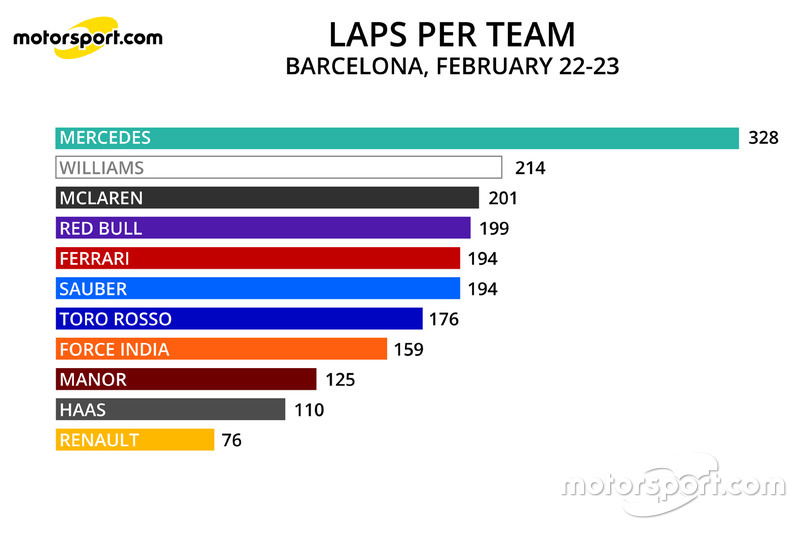 00-16 type I-88 with an internal pressure p = 3.5 kg / cm², depending on the speed of the car. As can be seen from the comparison of the curves, the determination by this empirical formula gives an underestimated value of the coefficient f in comparison with the experimental data for tires with a three-dimensional tread; the discrepancy increases with speed.
00-16 type I-88 with an internal pressure p = 3.5 kg / cm², depending on the speed of the car. As can be seen from the comparison of the curves, the determination by this empirical formula gives an underestimated value of the coefficient f in comparison with the experimental data for tires with a three-dimensional tread; the discrepancy increases with speed.
For tires with a turned tread, the value of the coefficient f is somewhat overestimated: at speeds above 200 km/h, this difference is not so significant and can be neglected in approximate dynamic calculations.
Please note that this formula was derived for typical racing tires of a special design, which tires of the I-88 type do not apply to.
Thus, the use of empirical formulas can give approximate results for tires of various types.
* Except when the tire inflation pressure is less than the set pressure. Driving on half-flat tires causes, in addition to increased tire wear, additional power consumption for rolling.